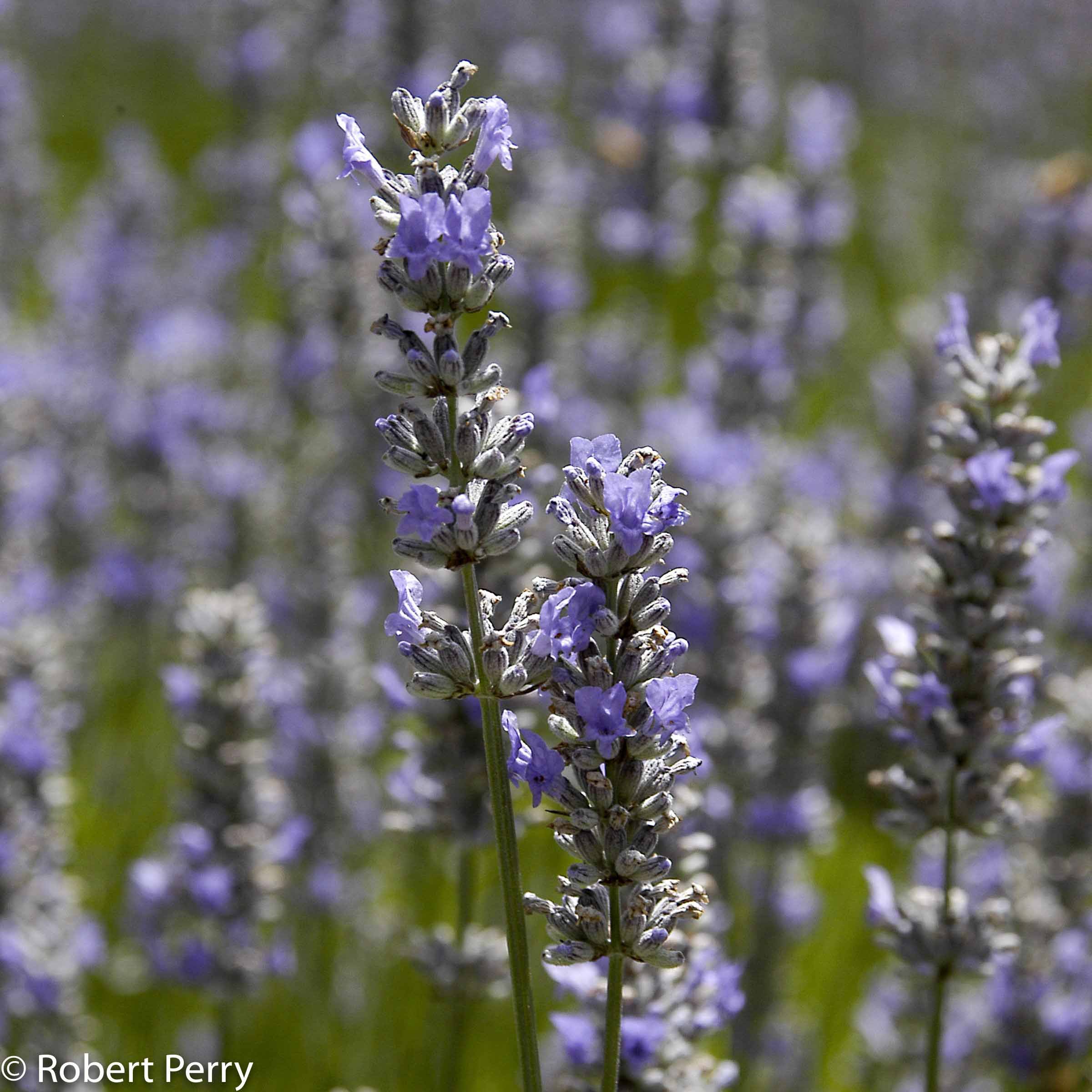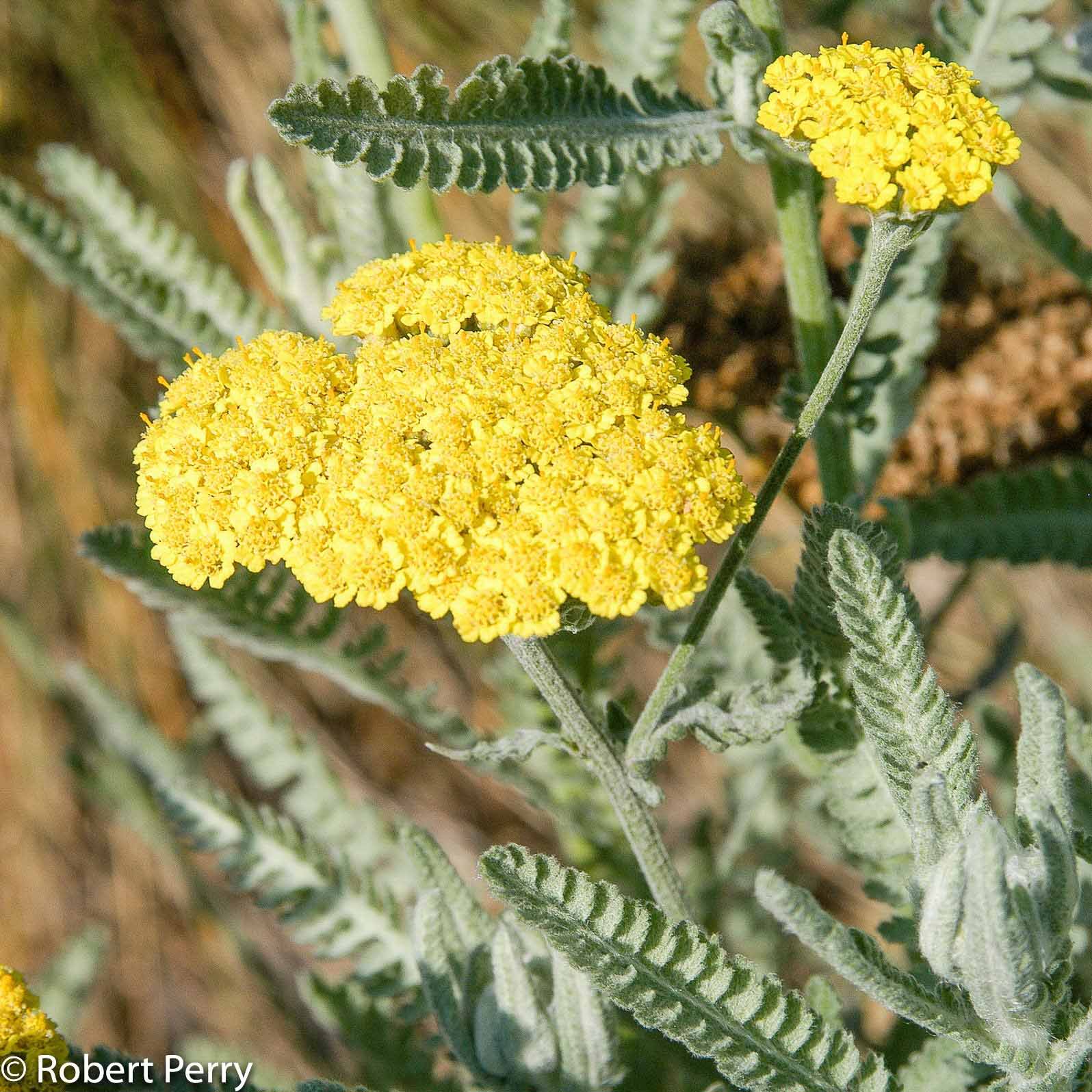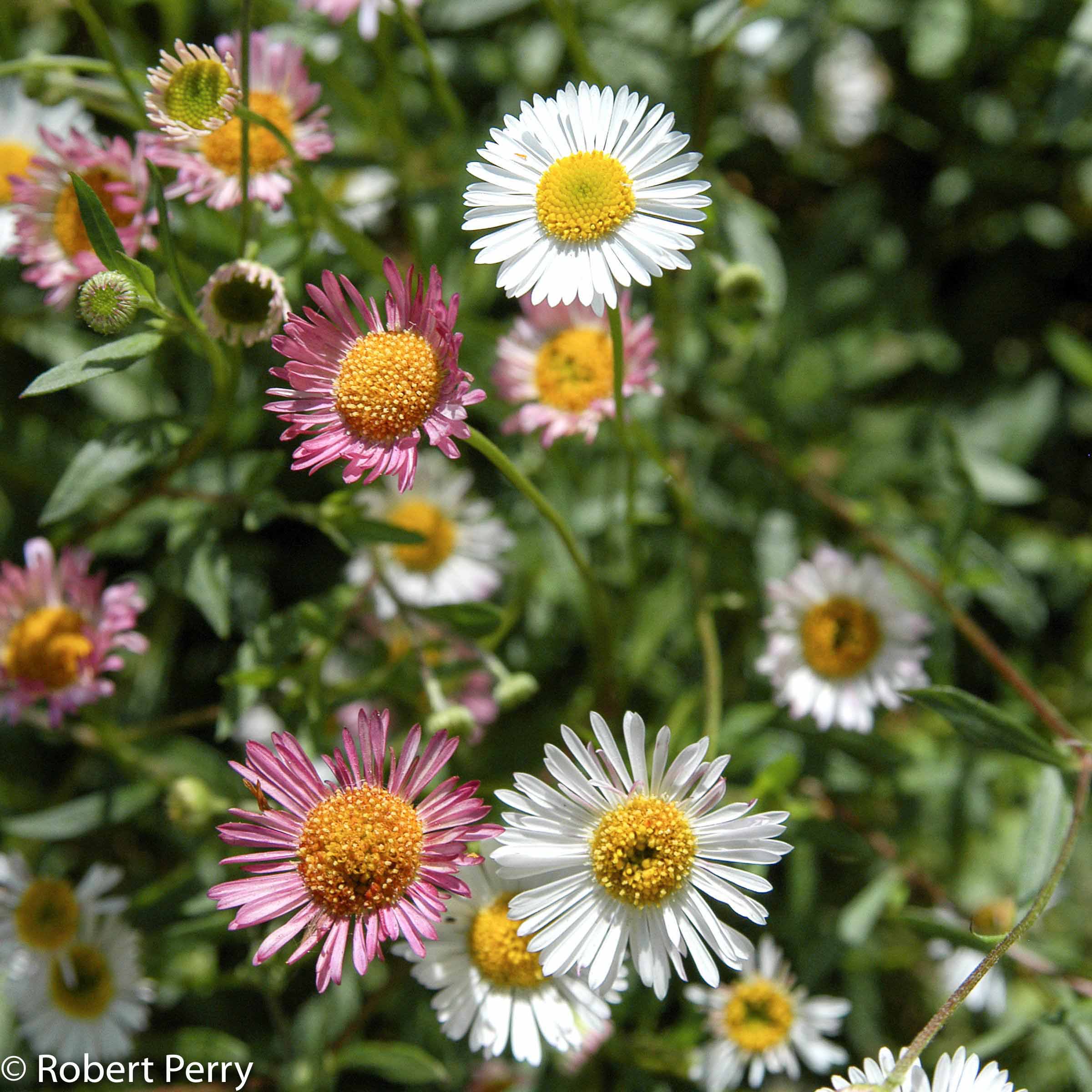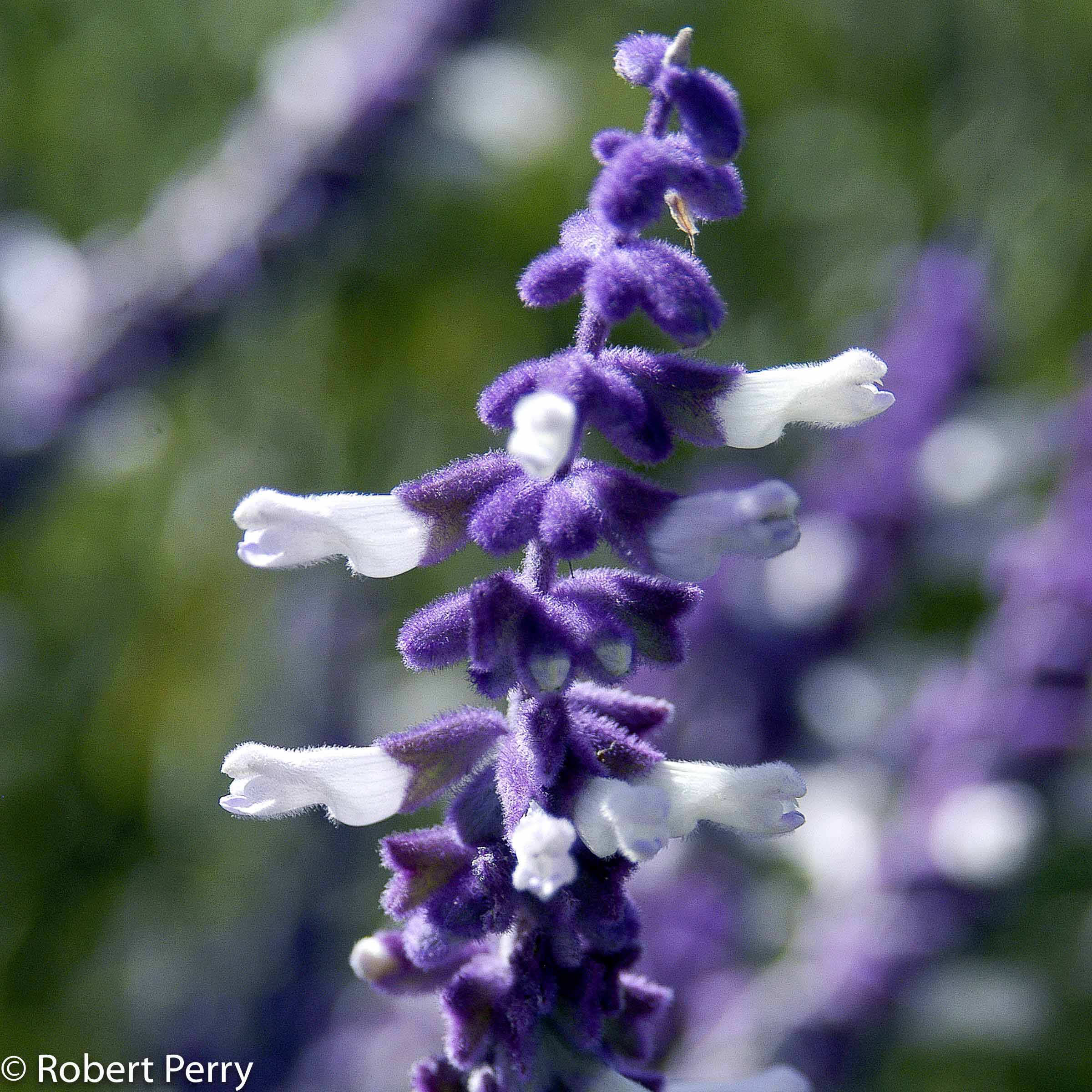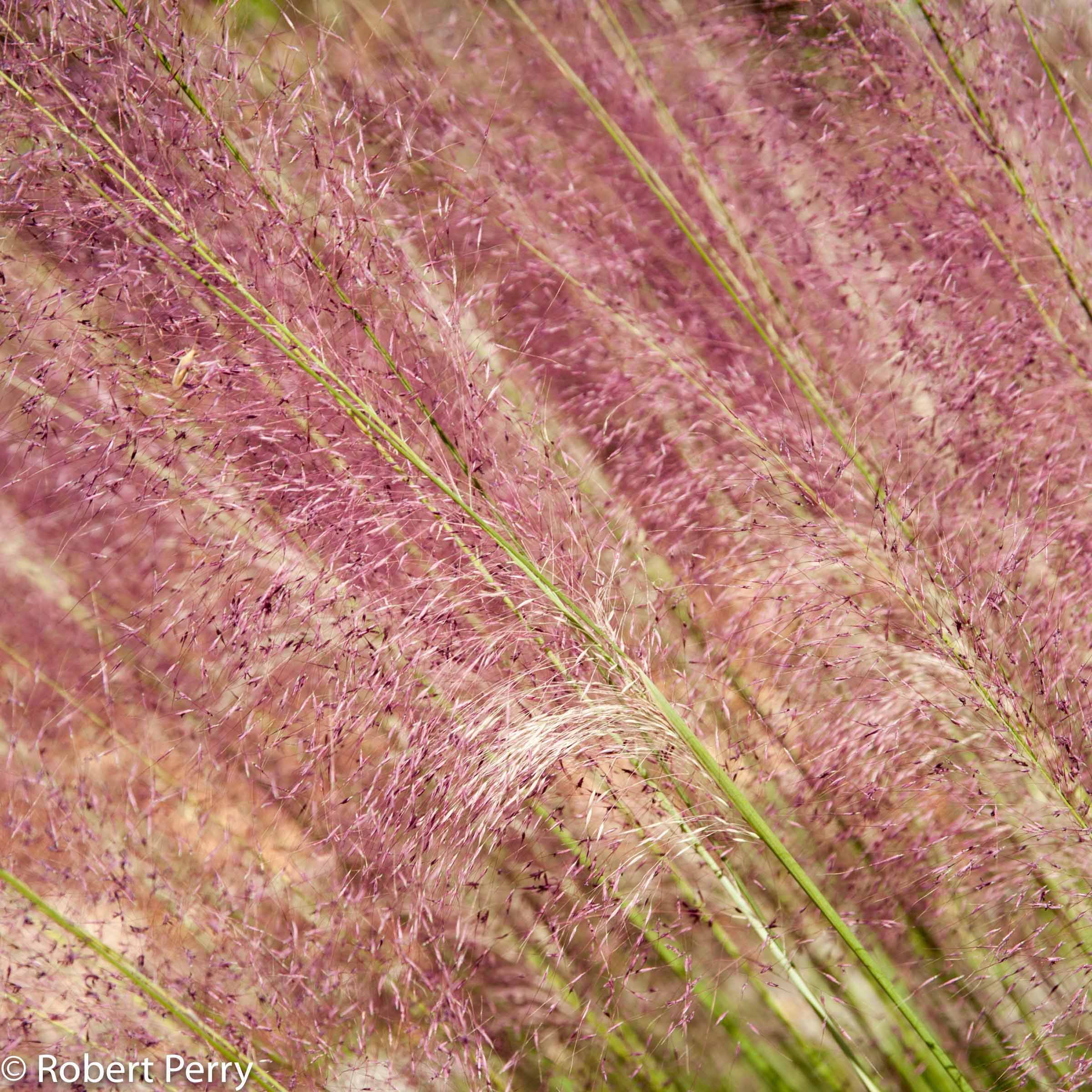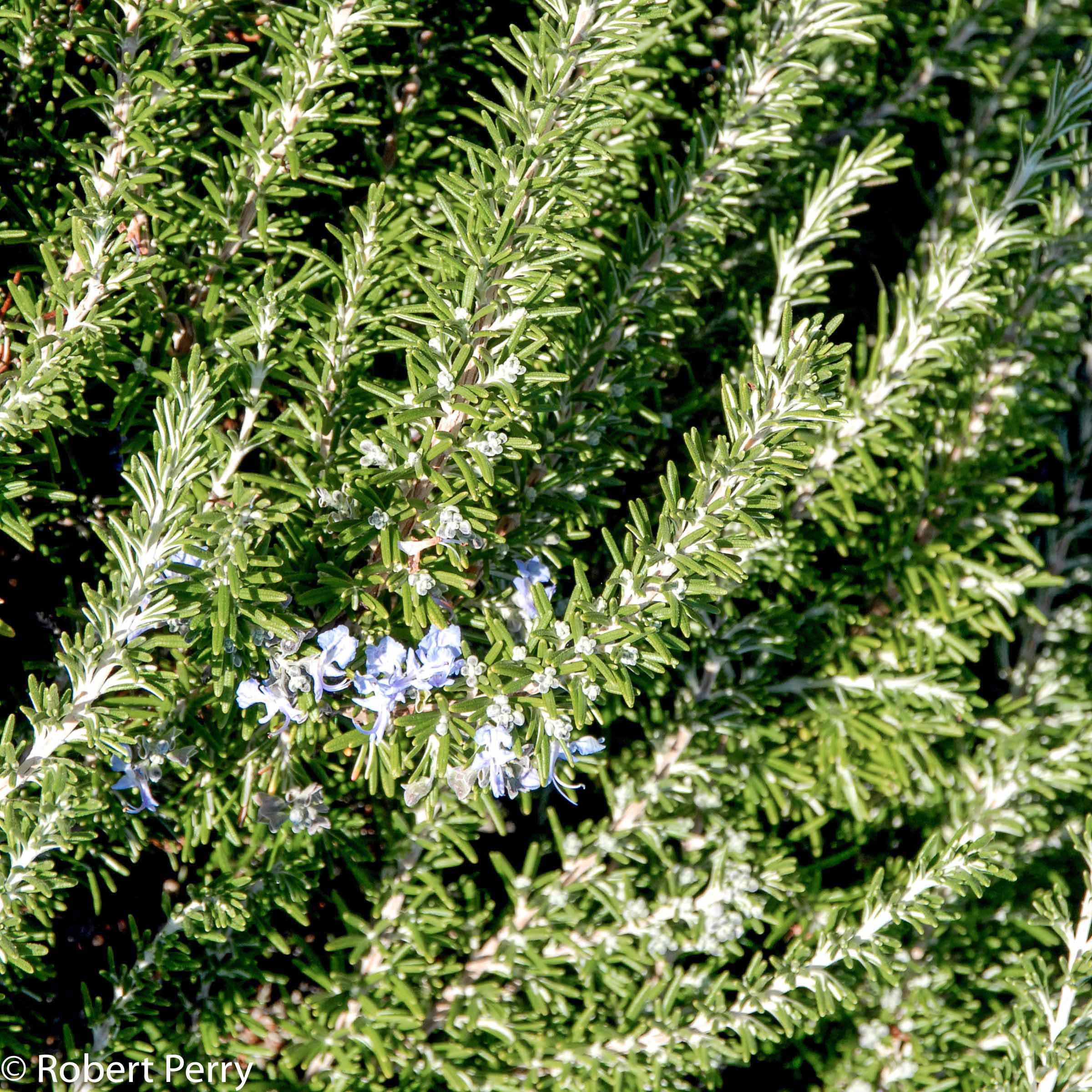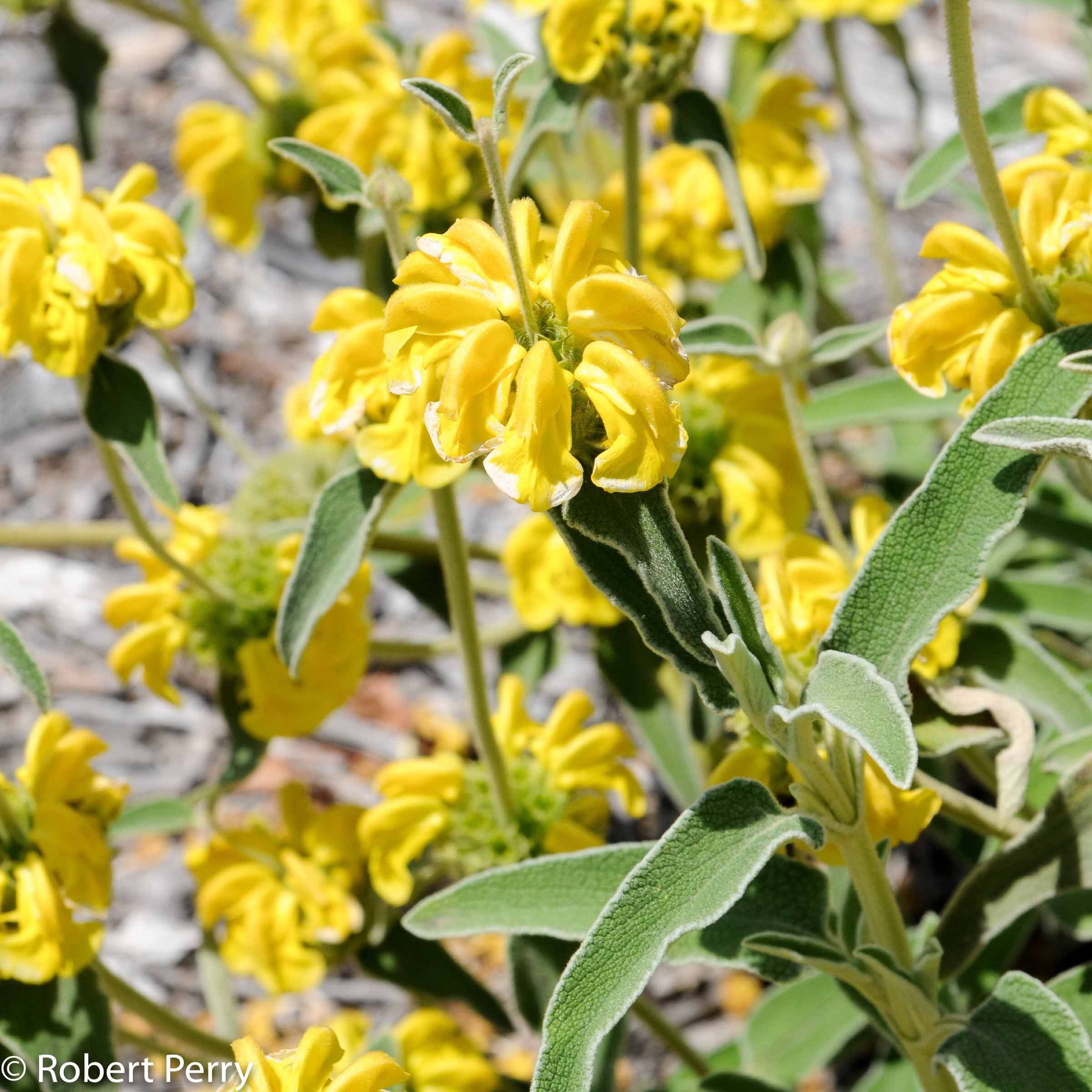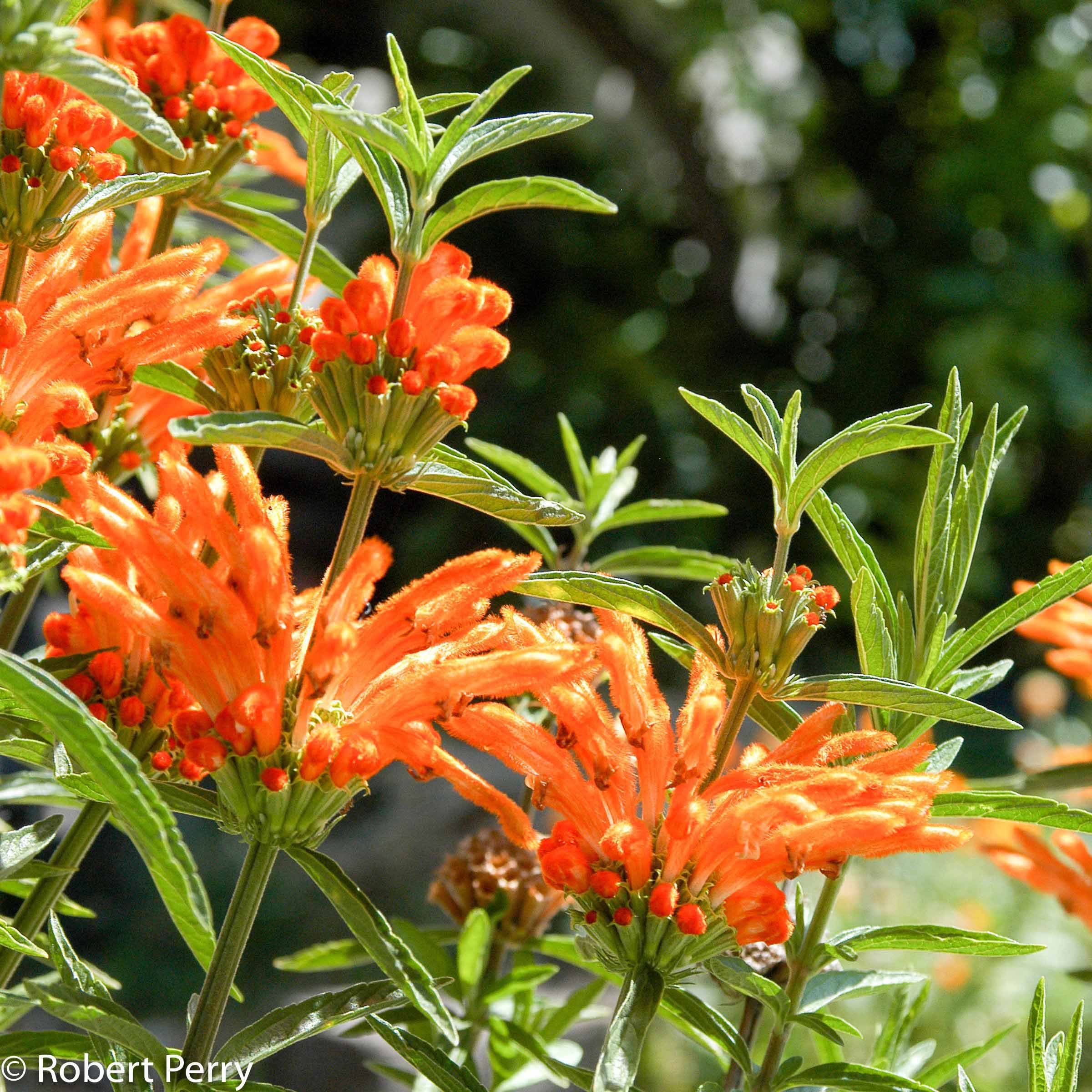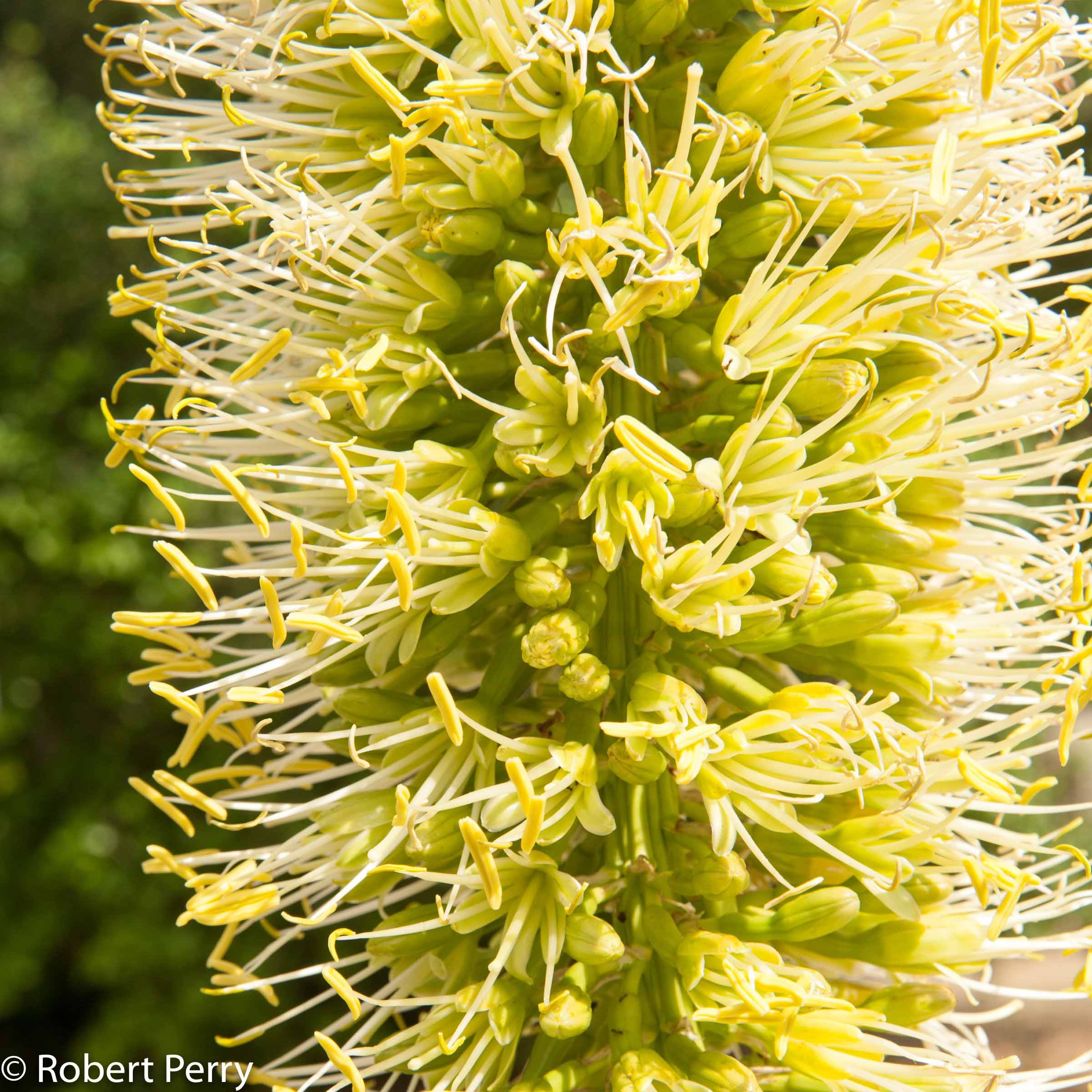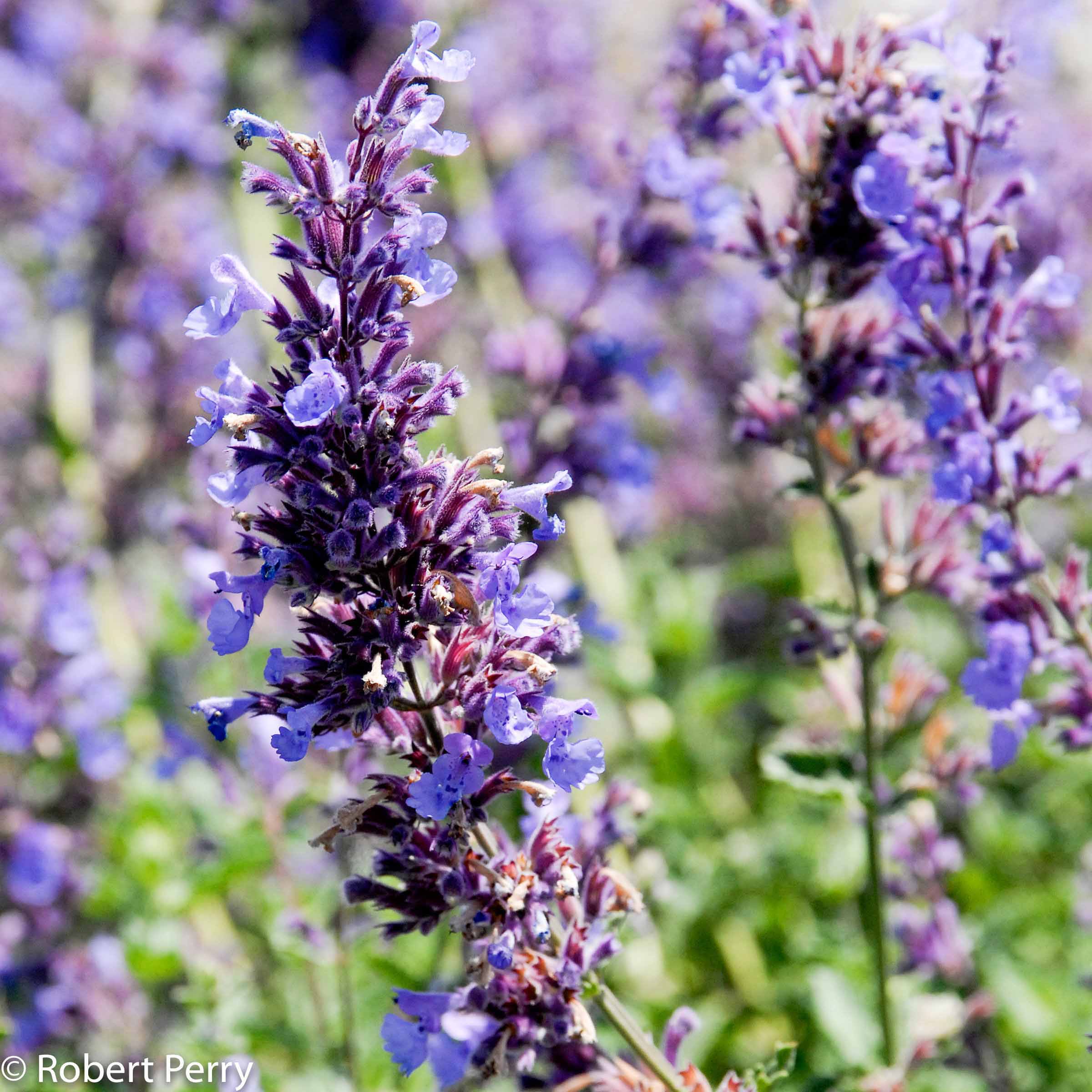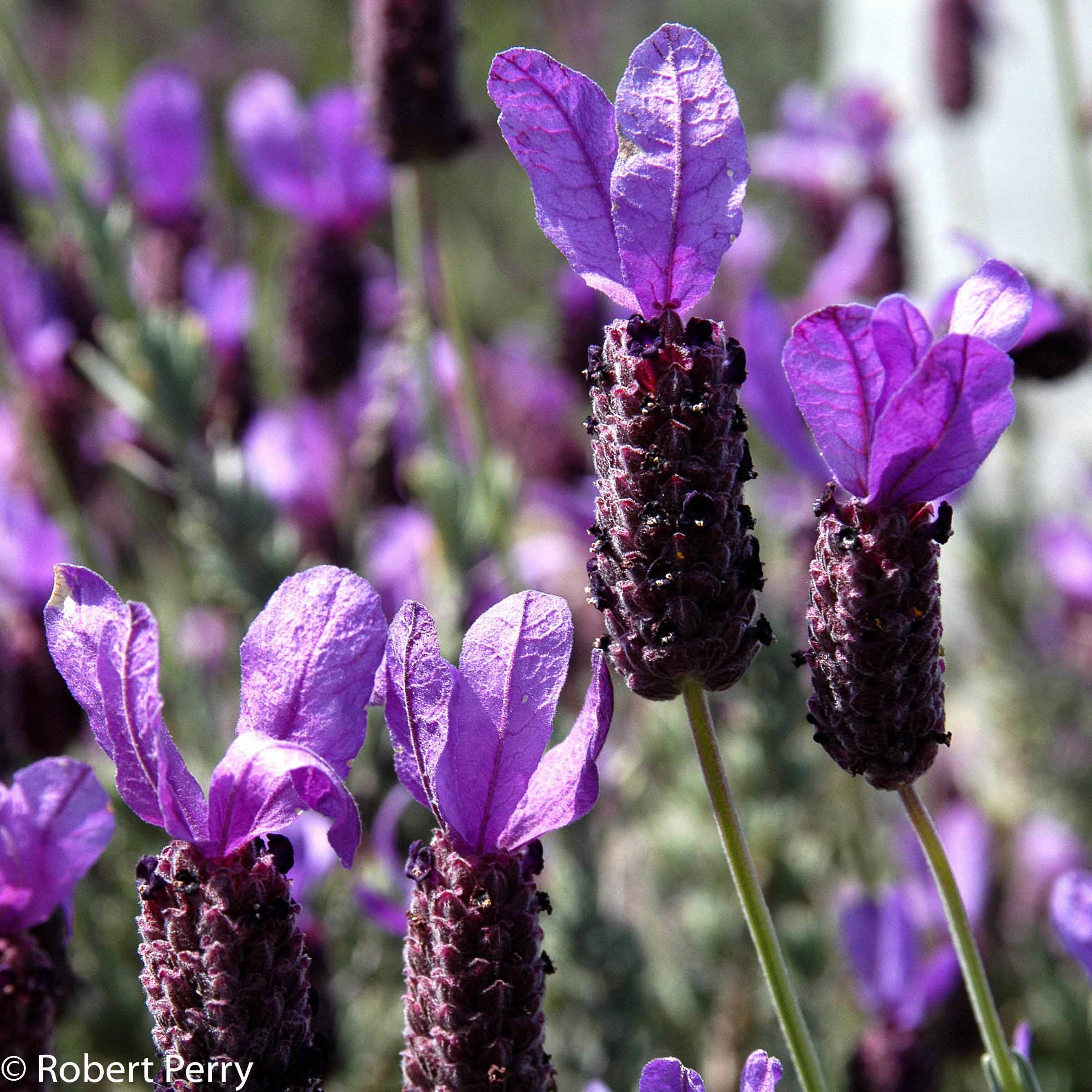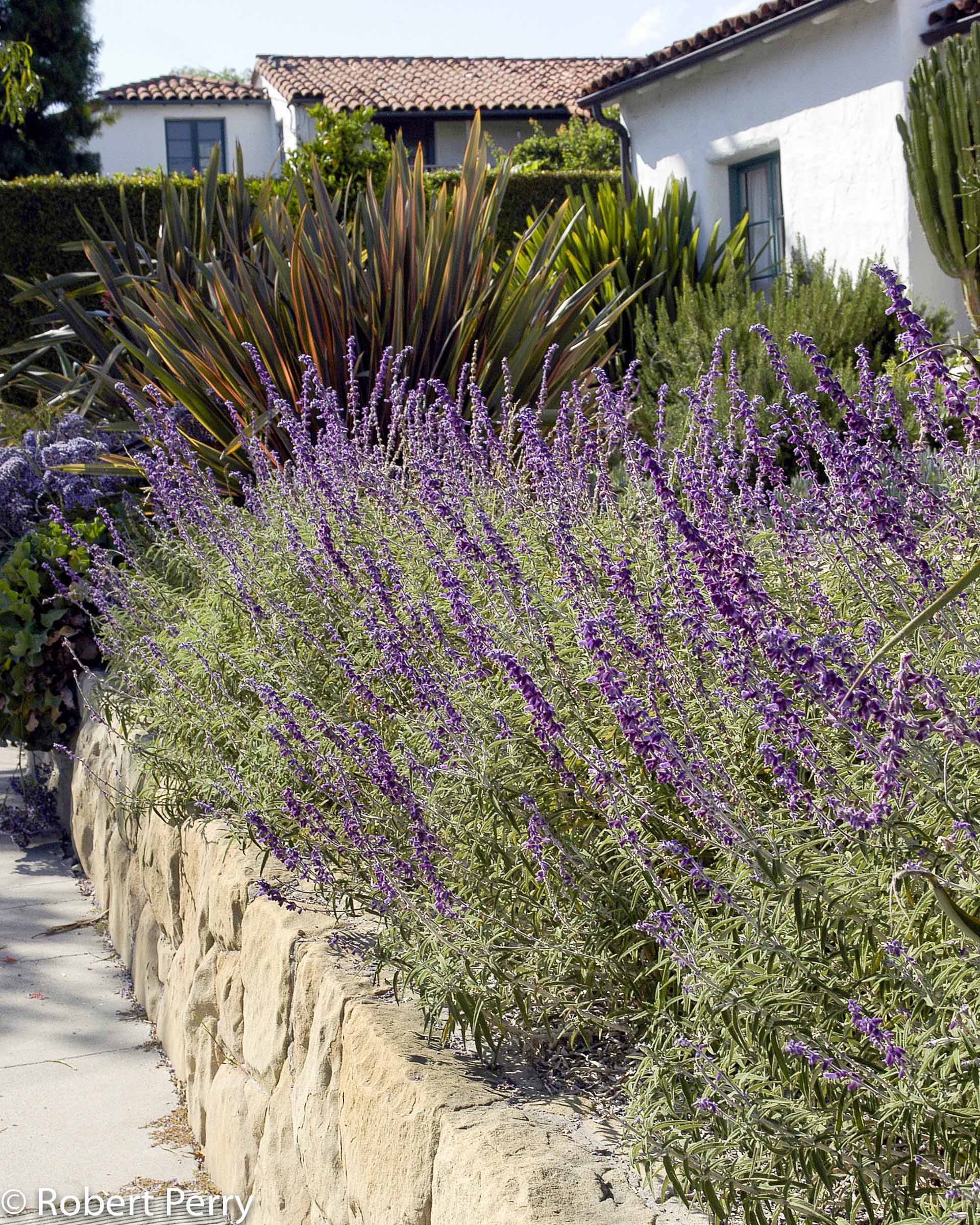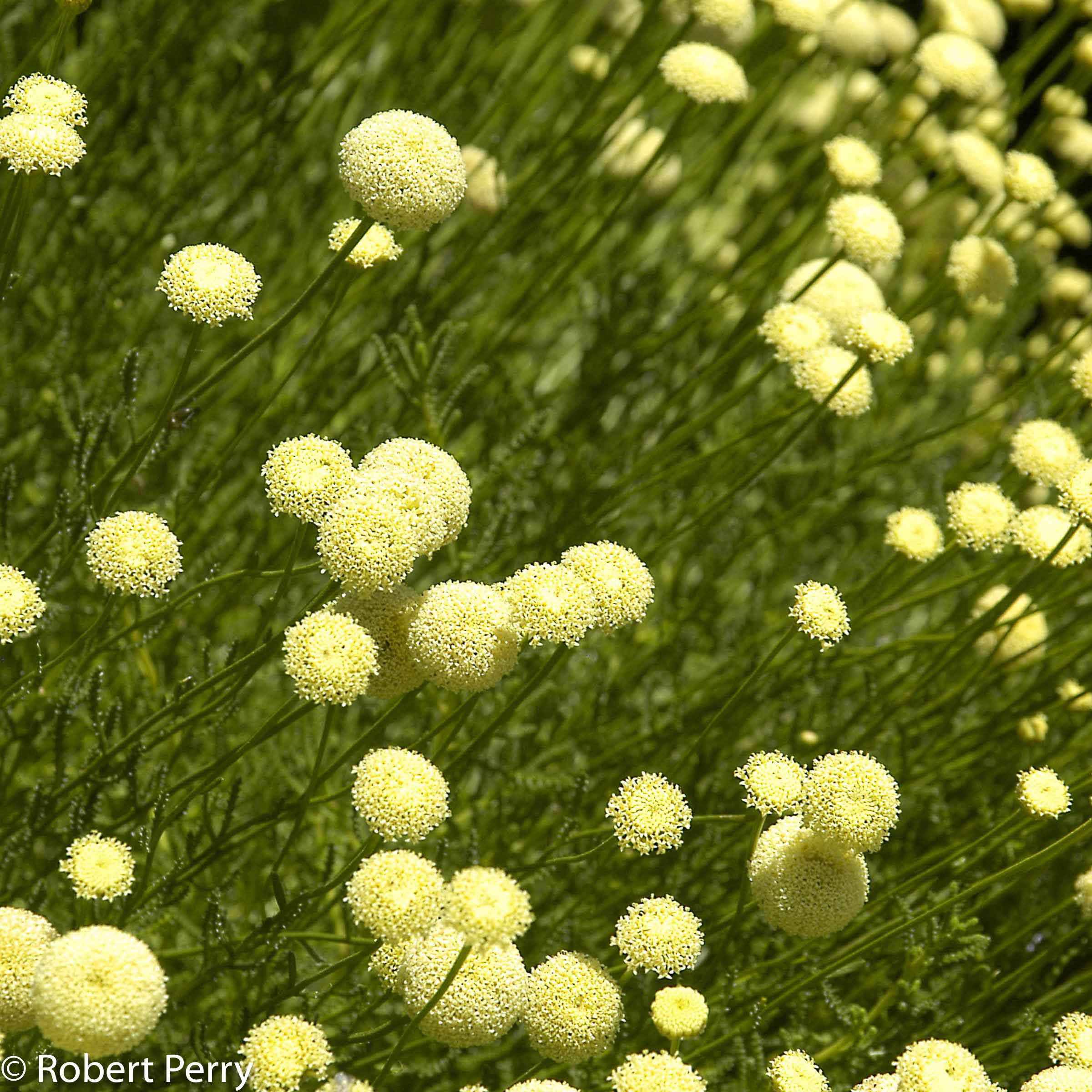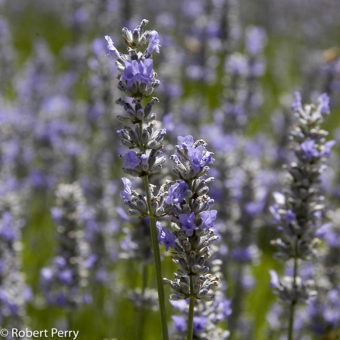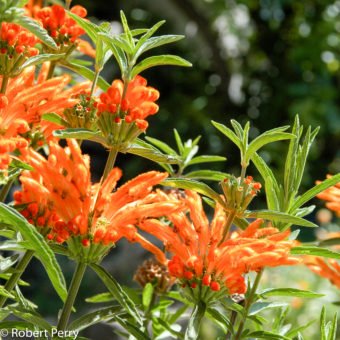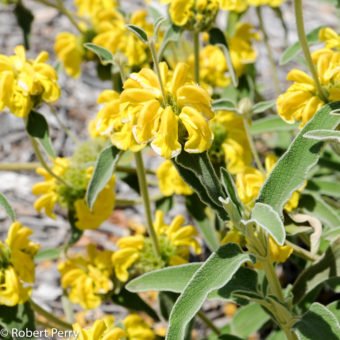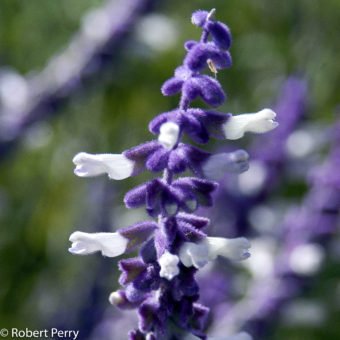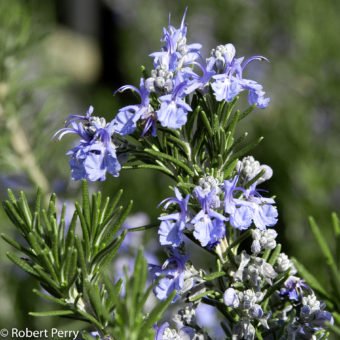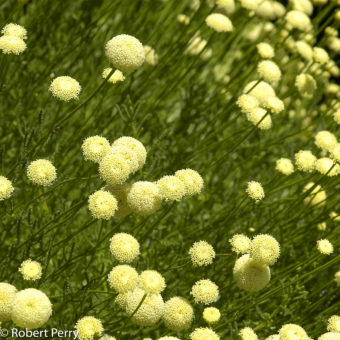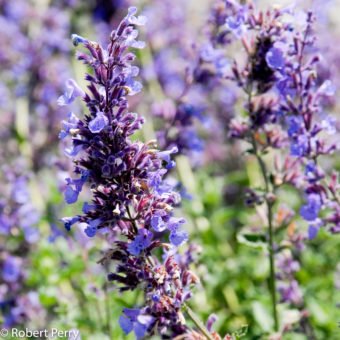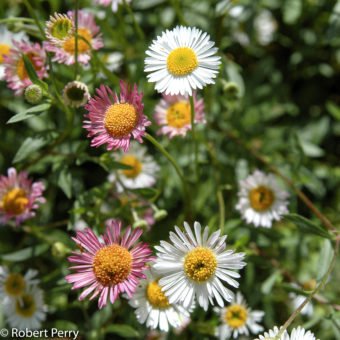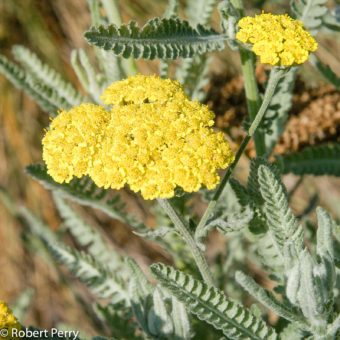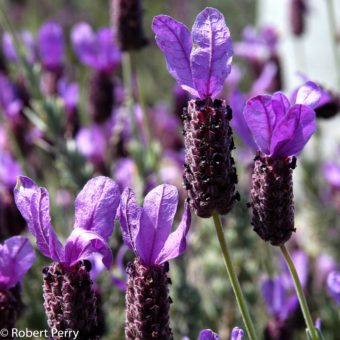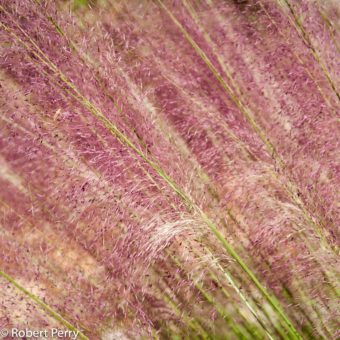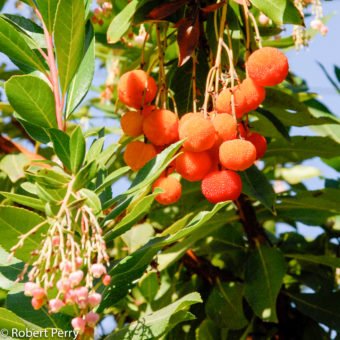Mediterranean Garden
The simple Mediterranean Garden provides the essence of the informal or semi-formal Mediterranean gardens of Italy and Southern France with some of the classic low-water and easy-to-maintain plants from the Mediterranean area and similar climates.
Mediterranean Garden design plans
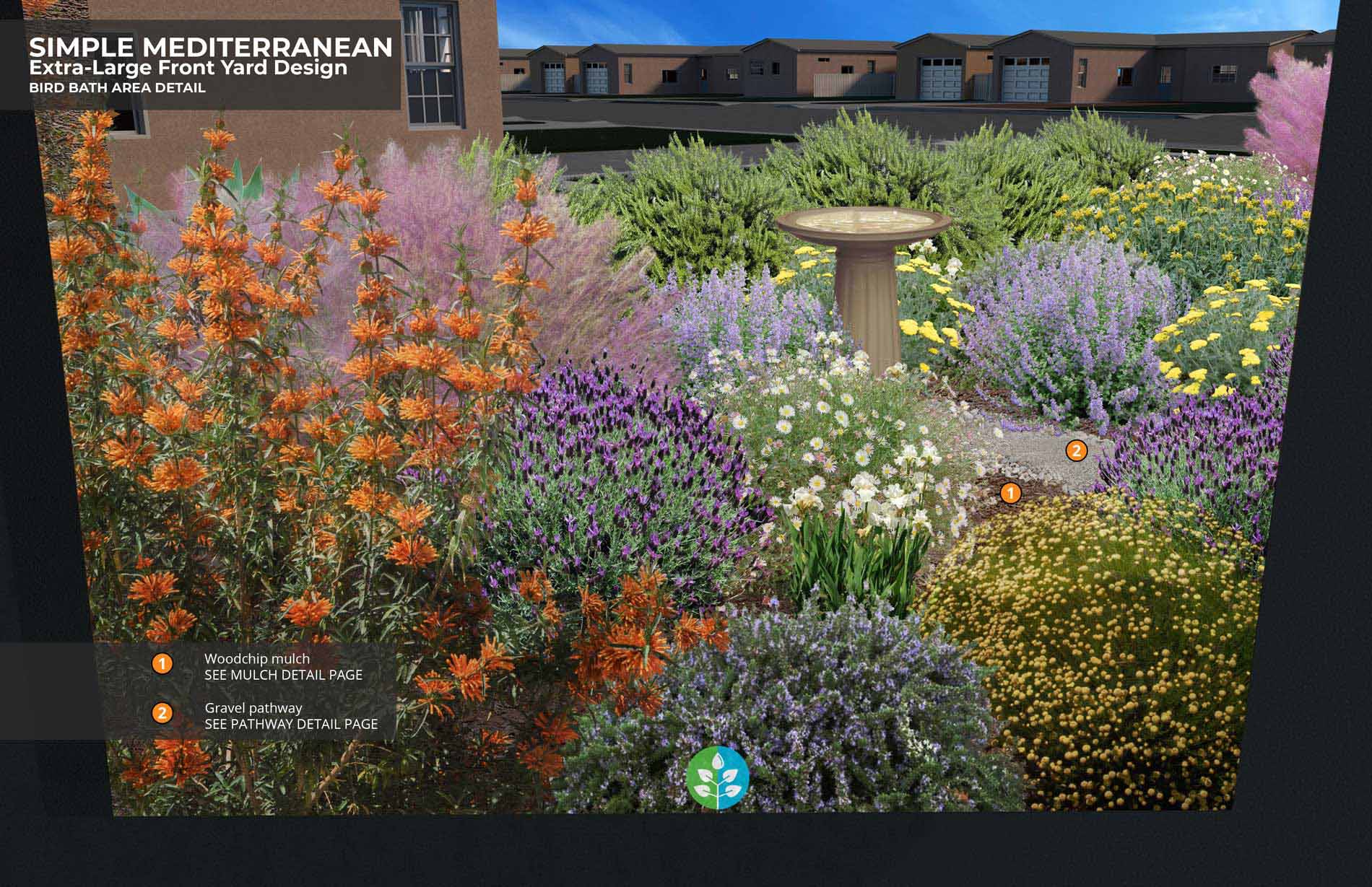
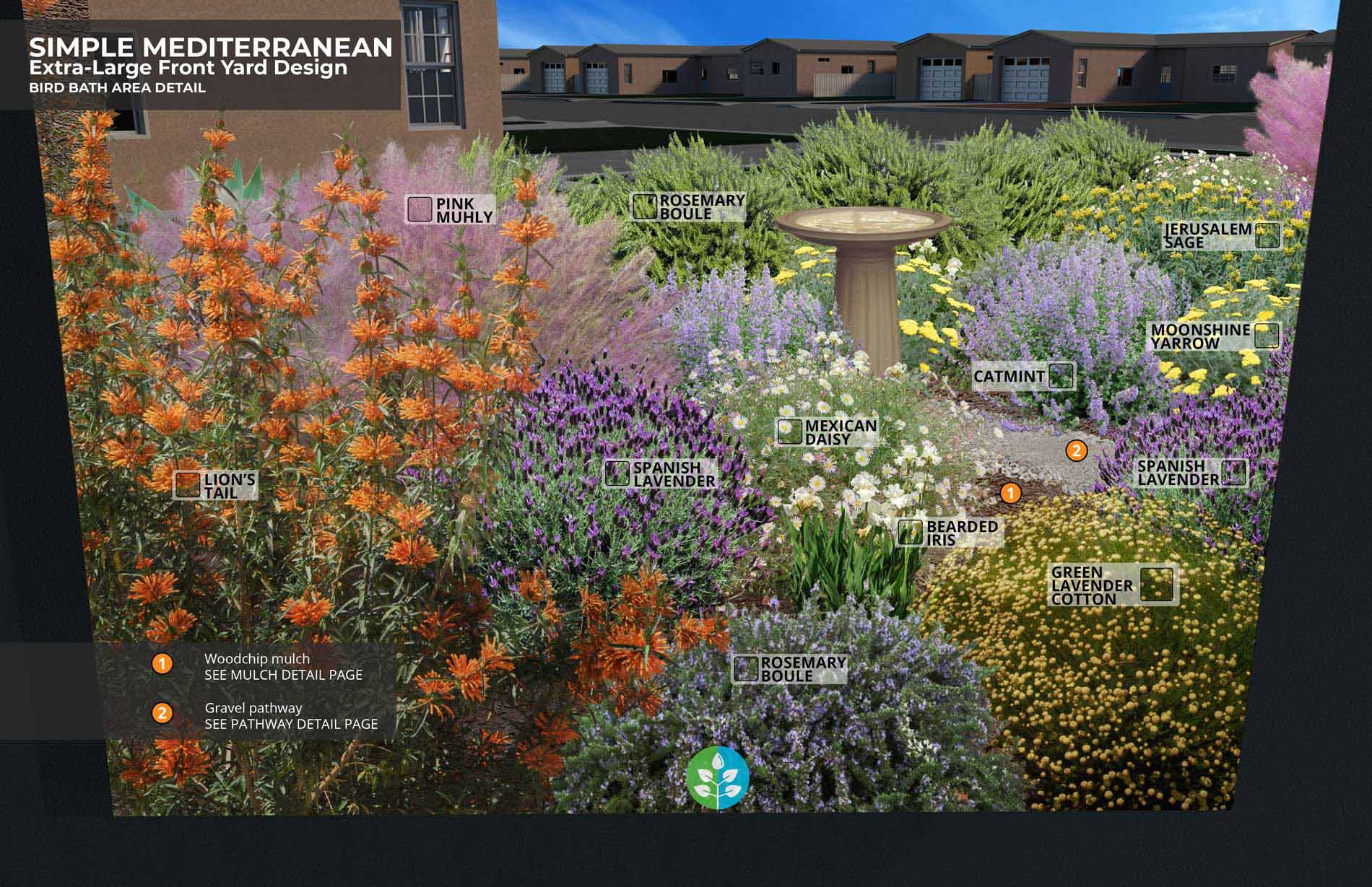
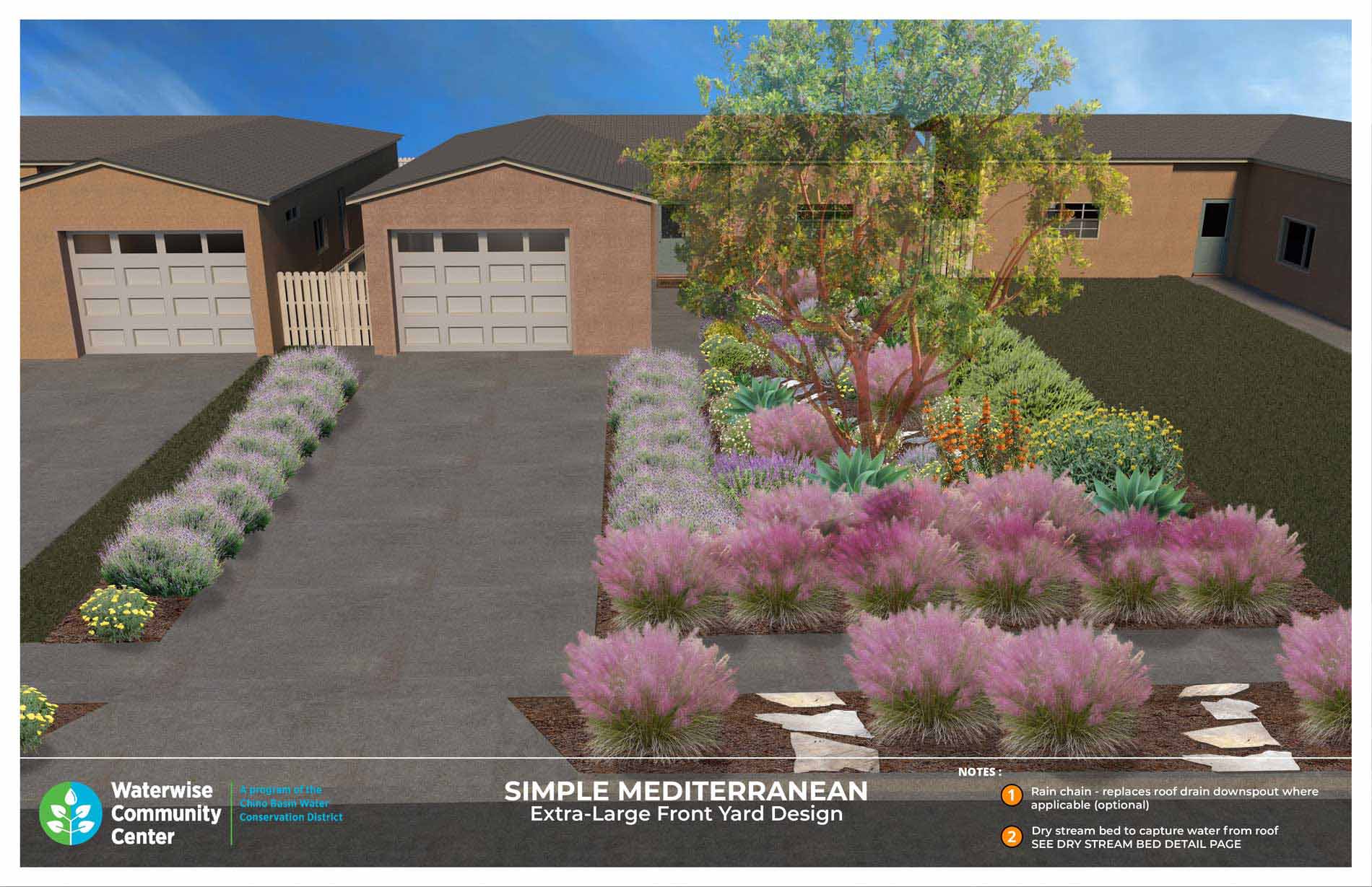
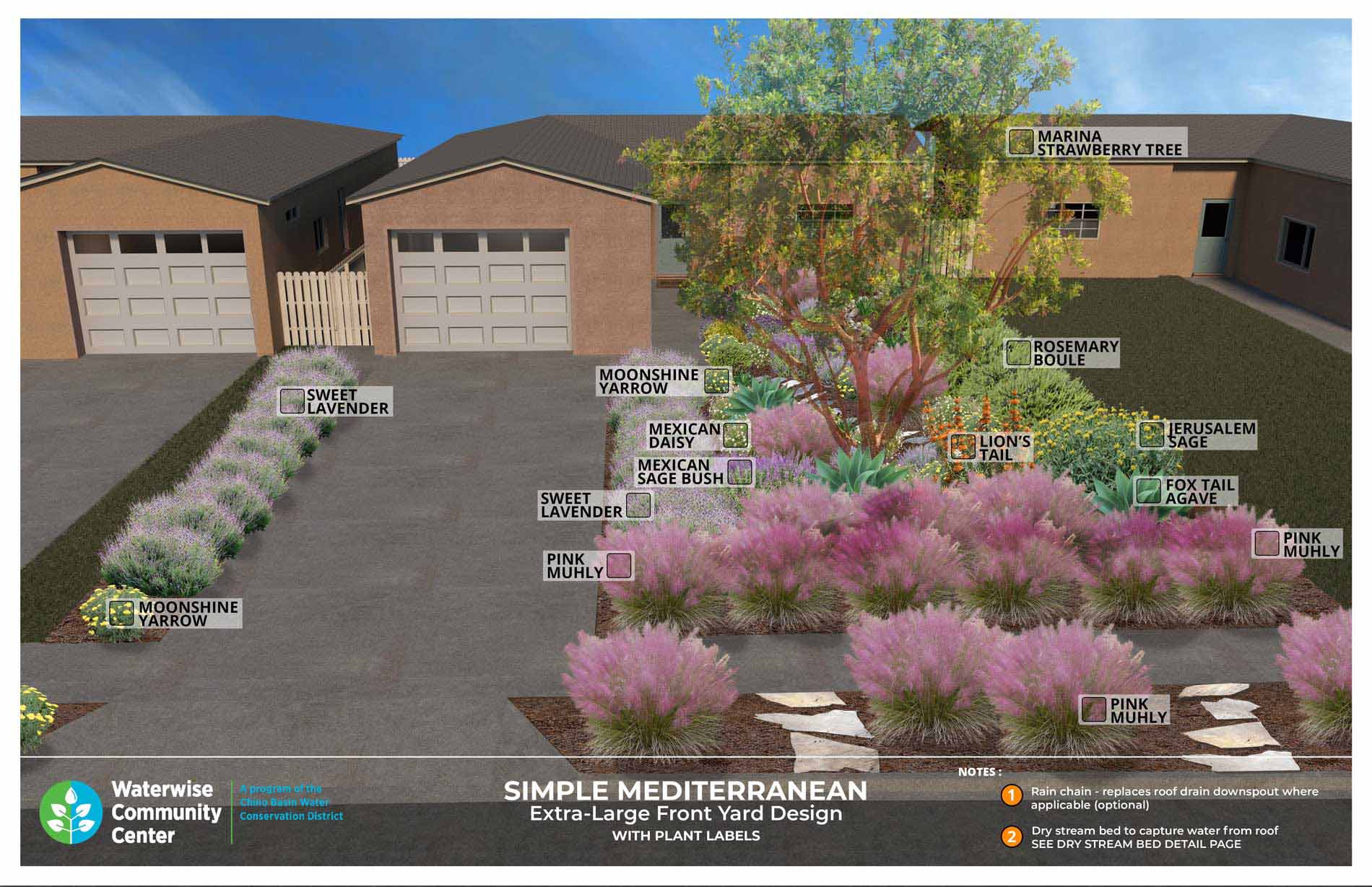

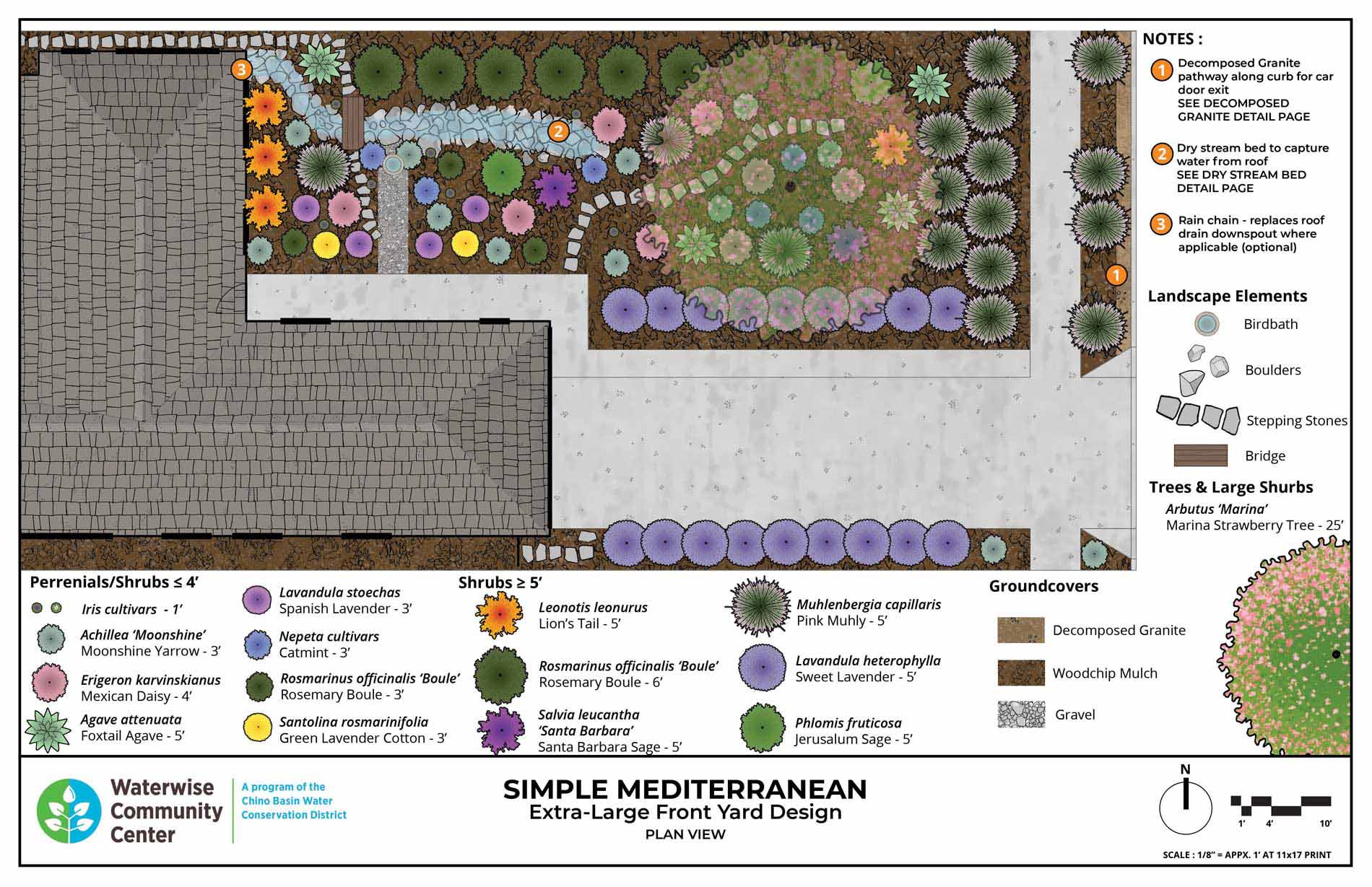
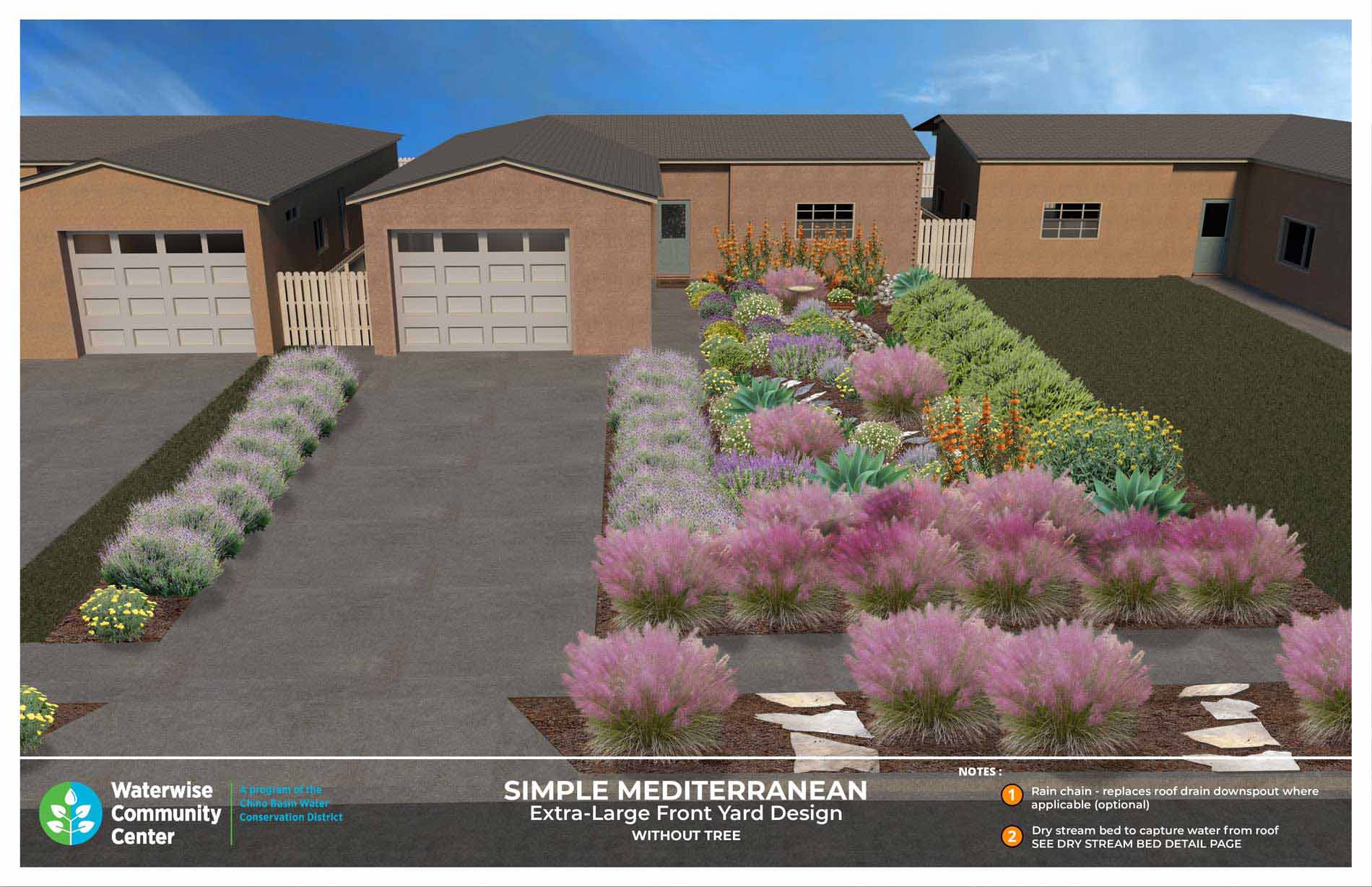
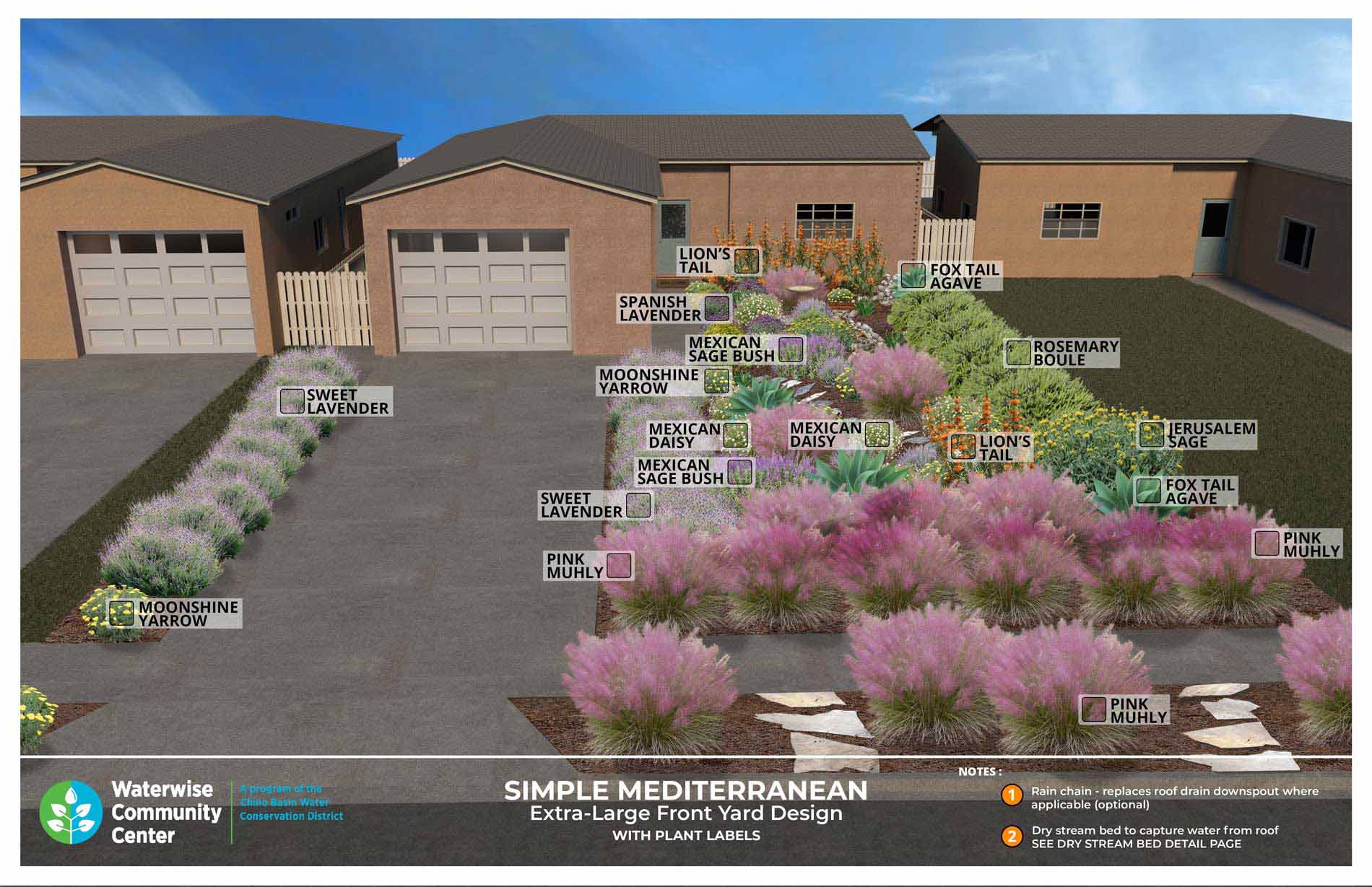
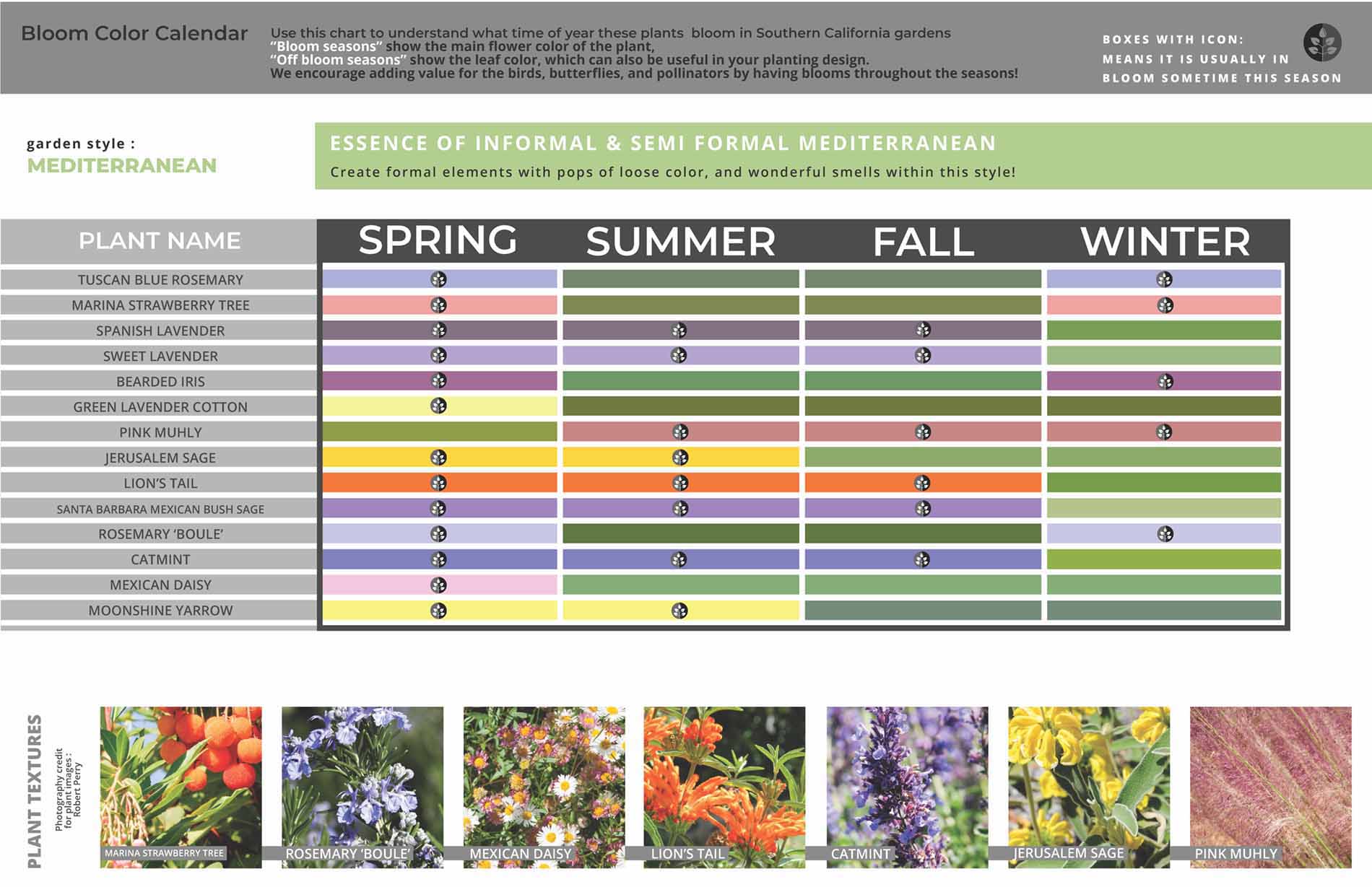
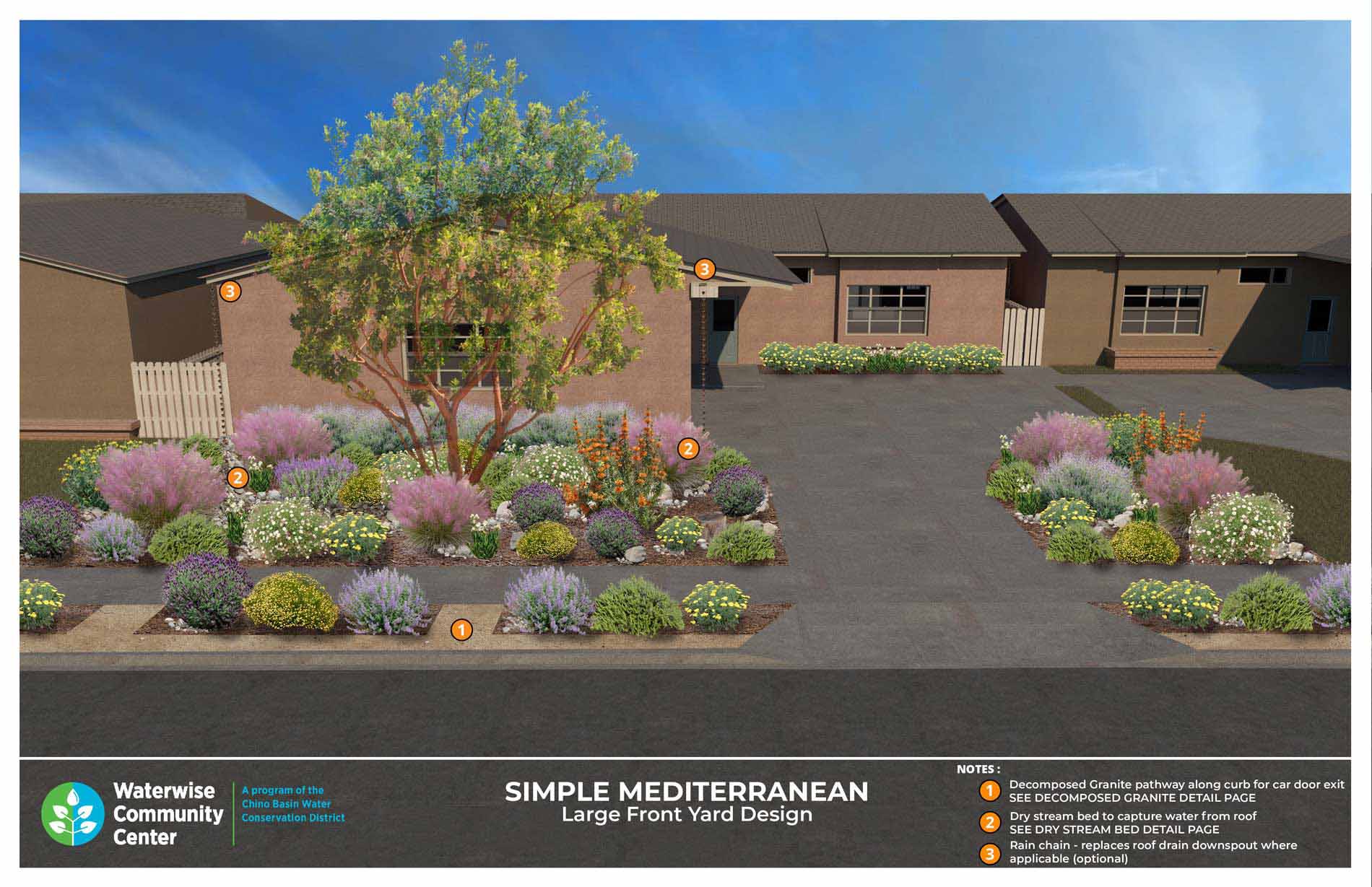
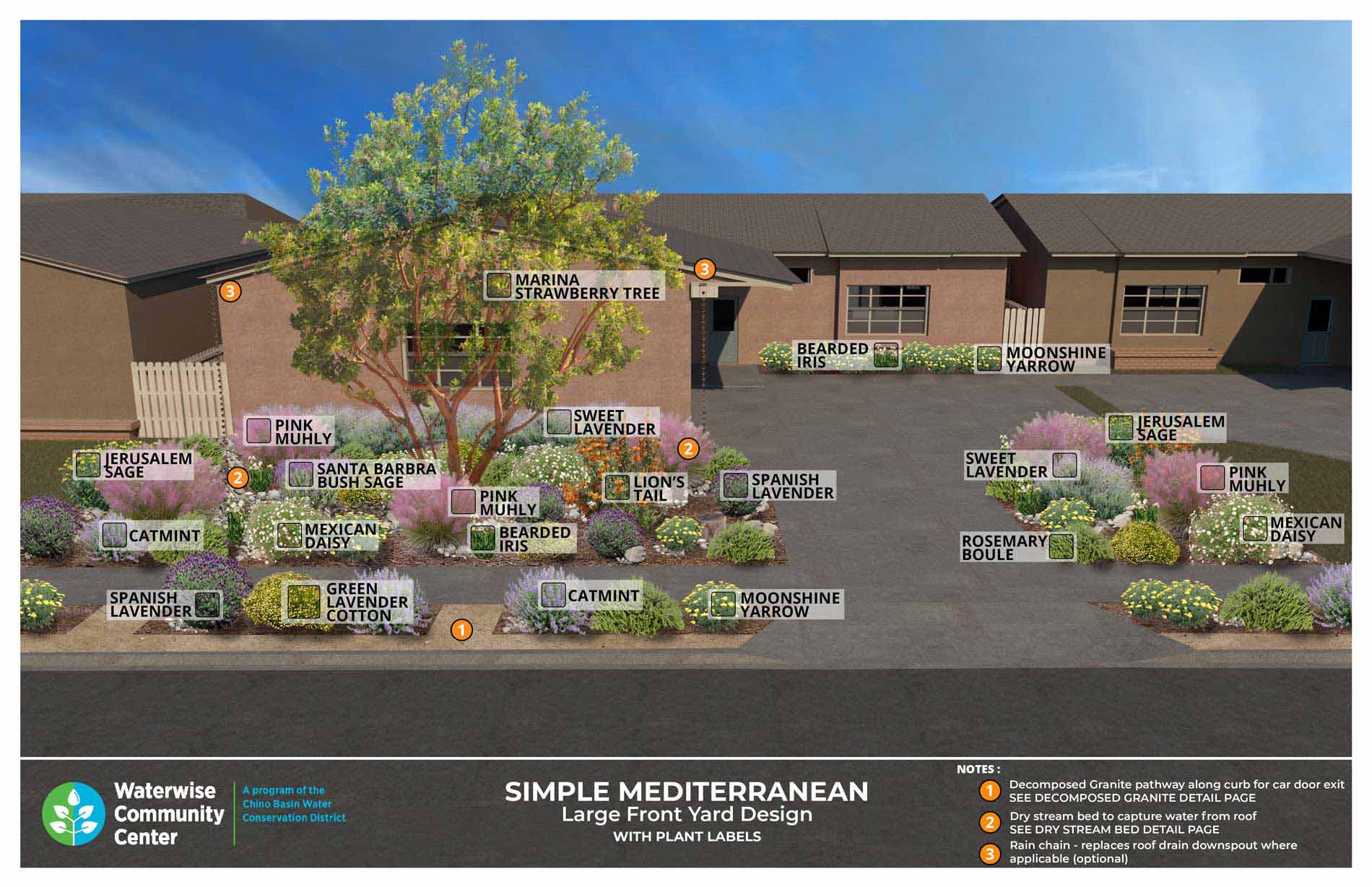

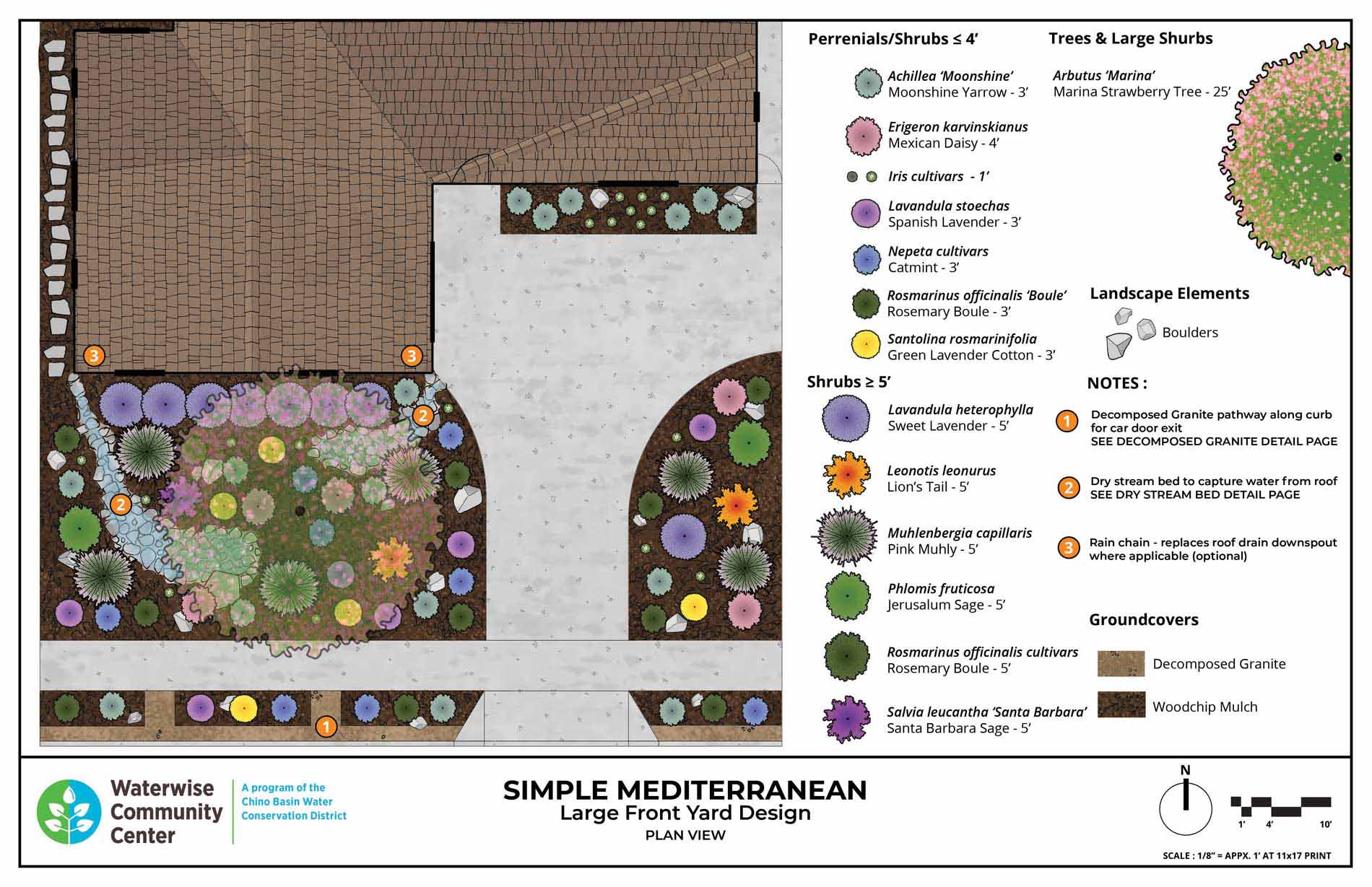

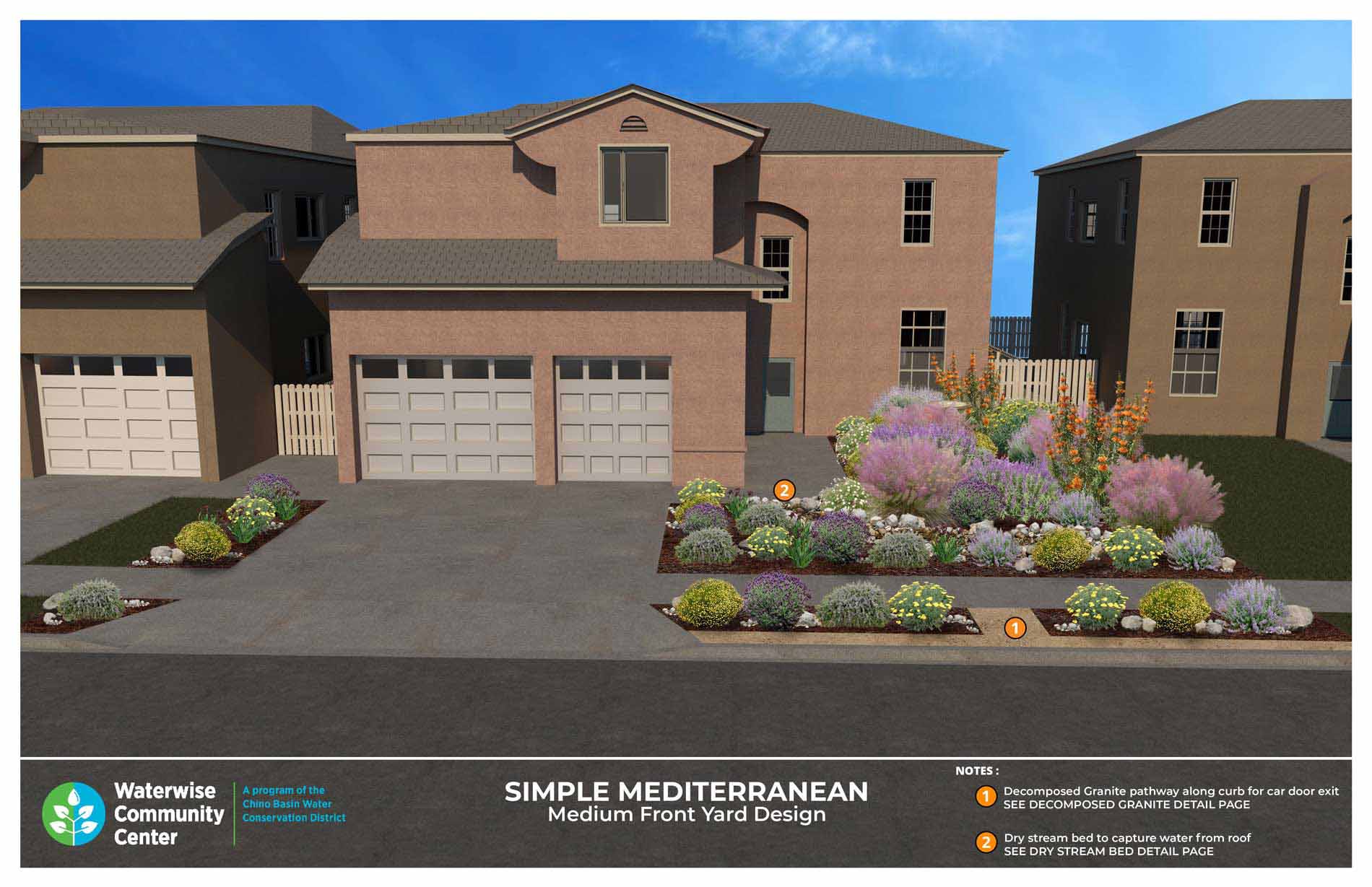
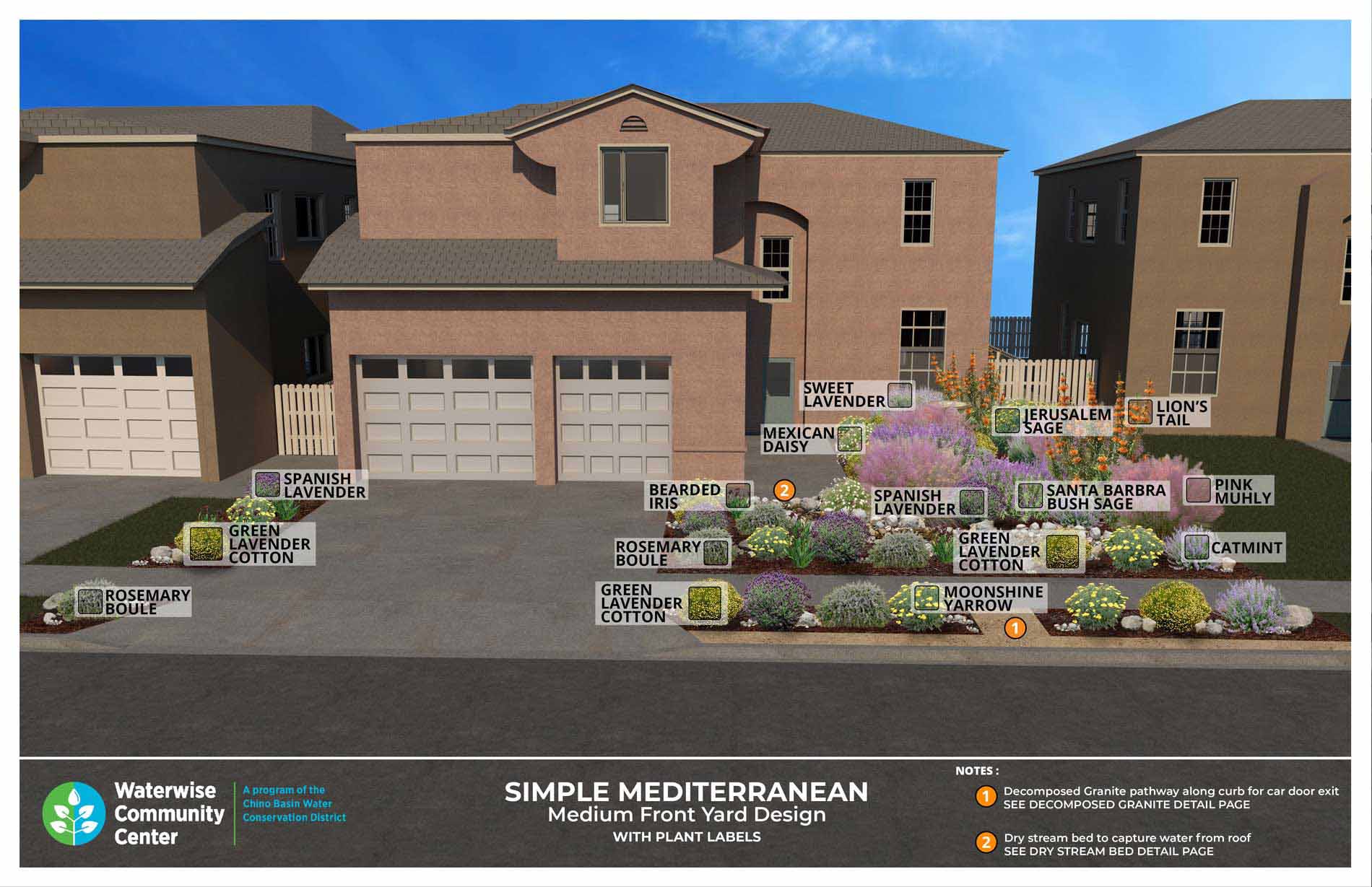

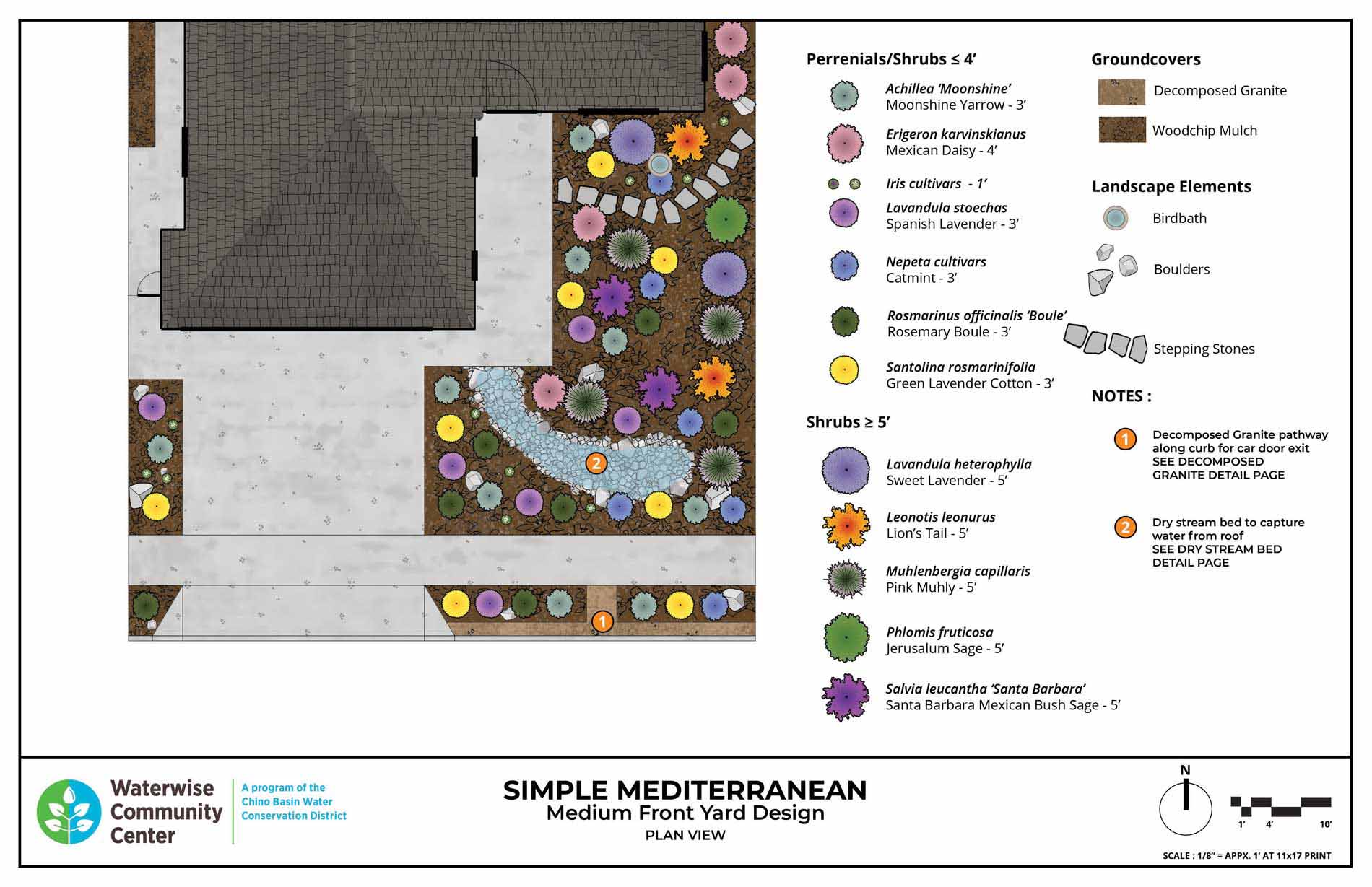

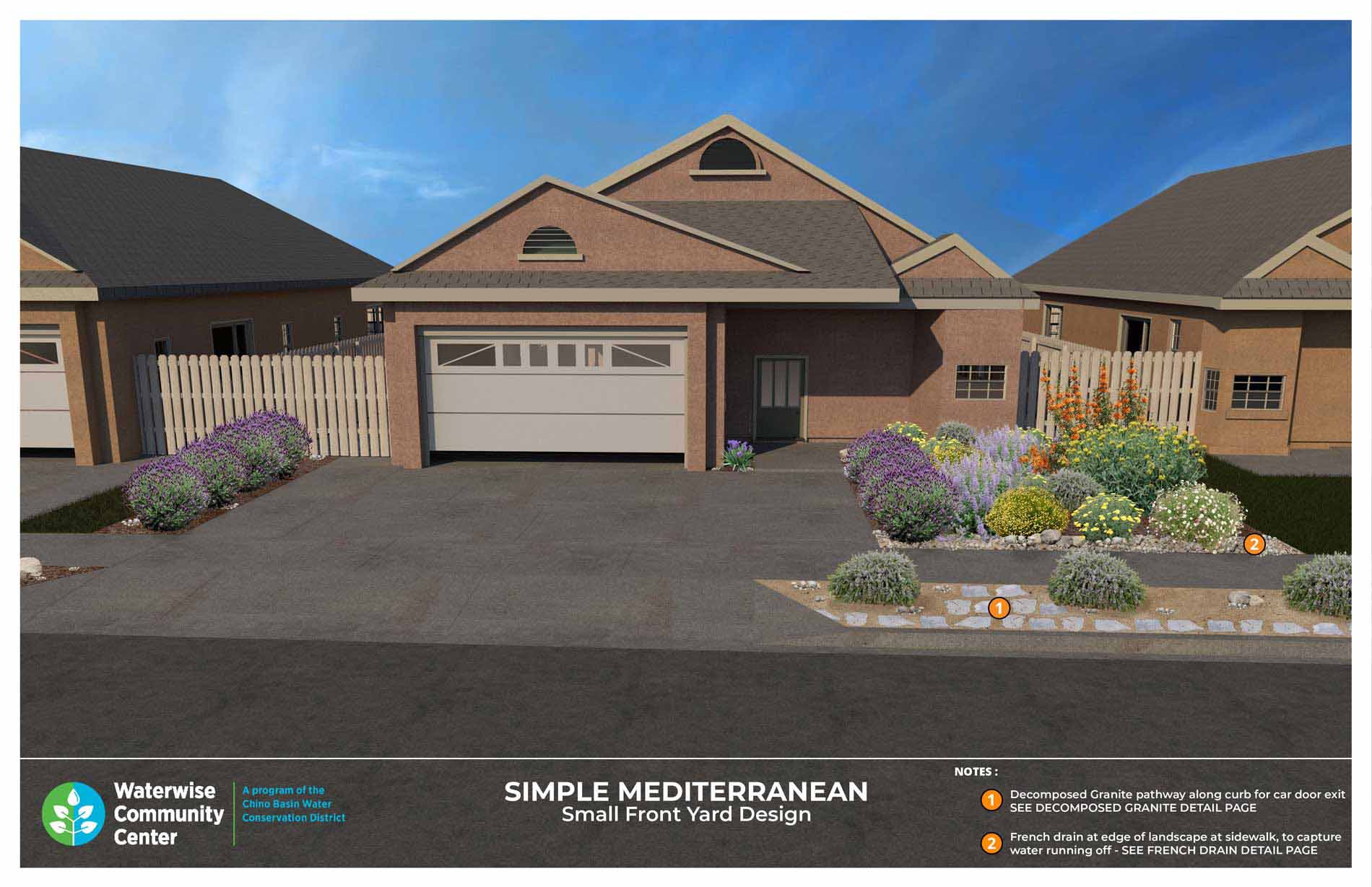
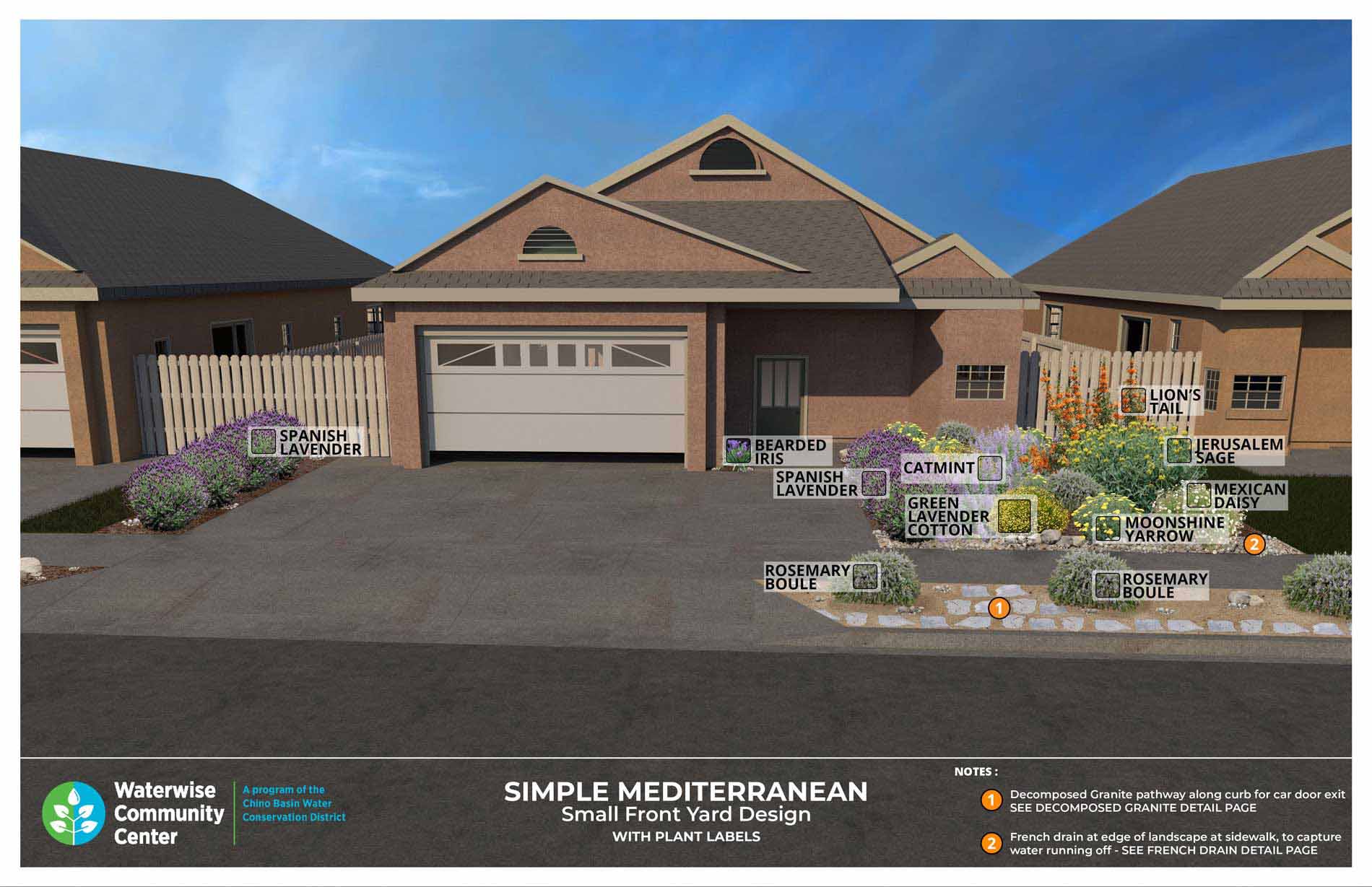

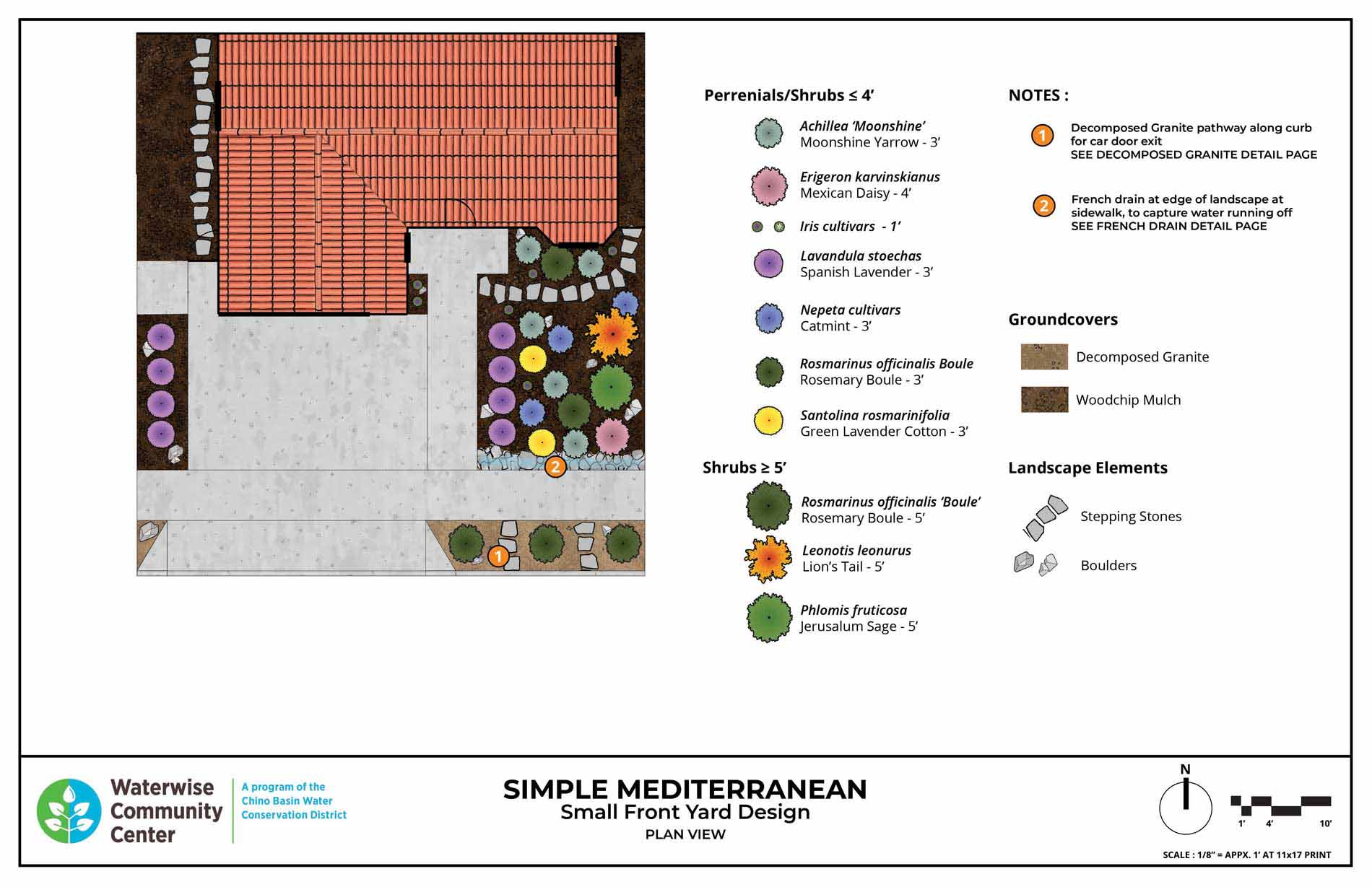

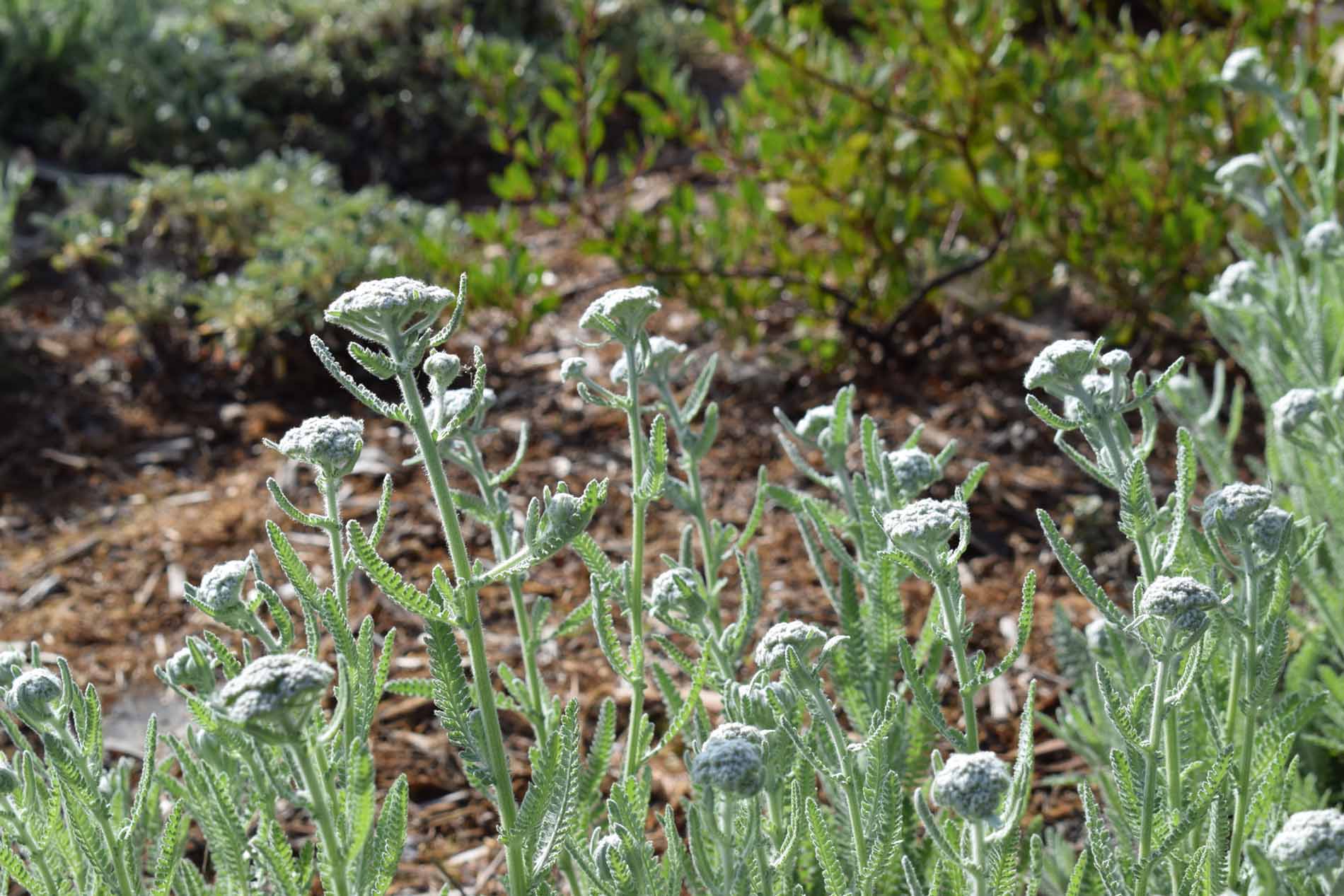
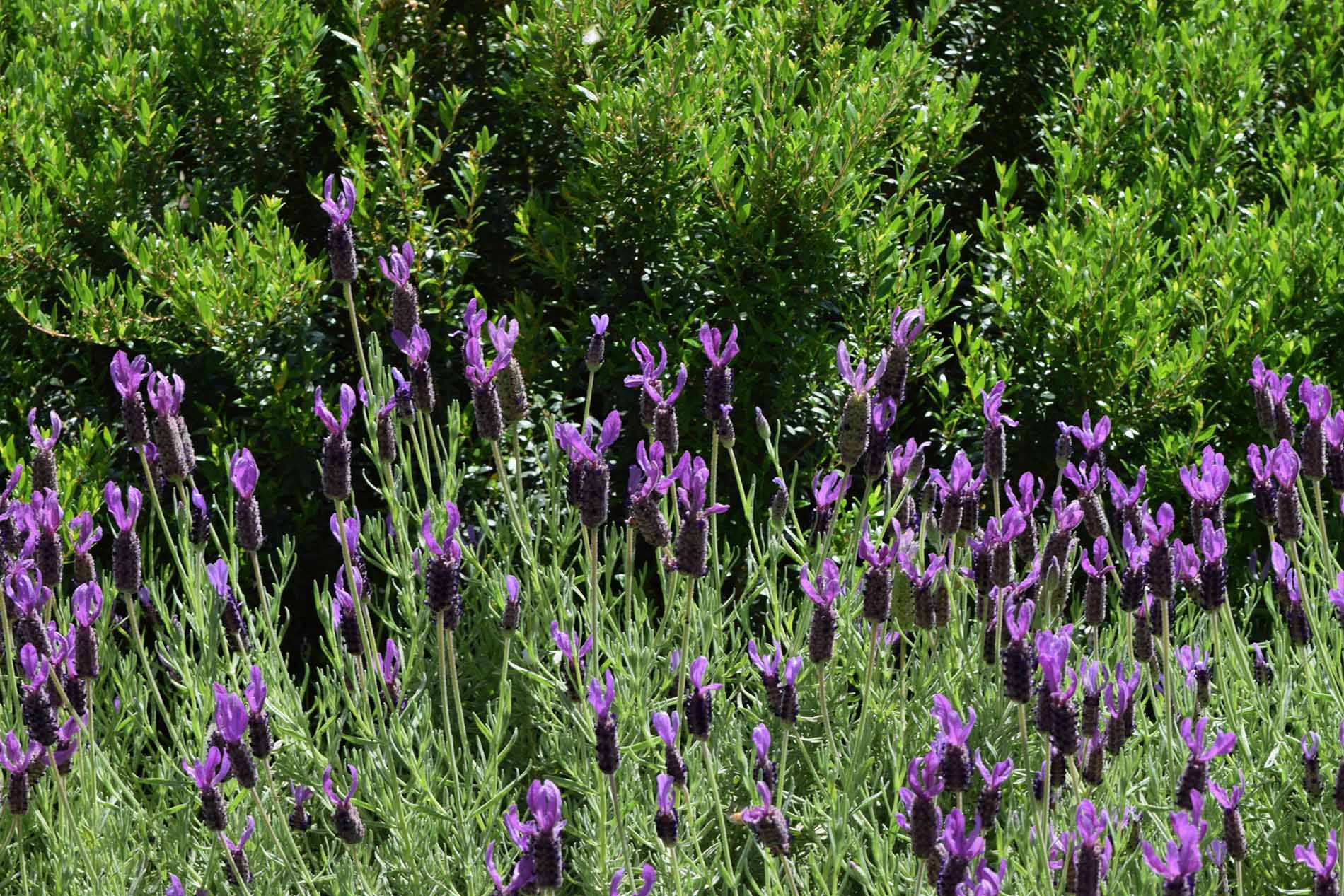
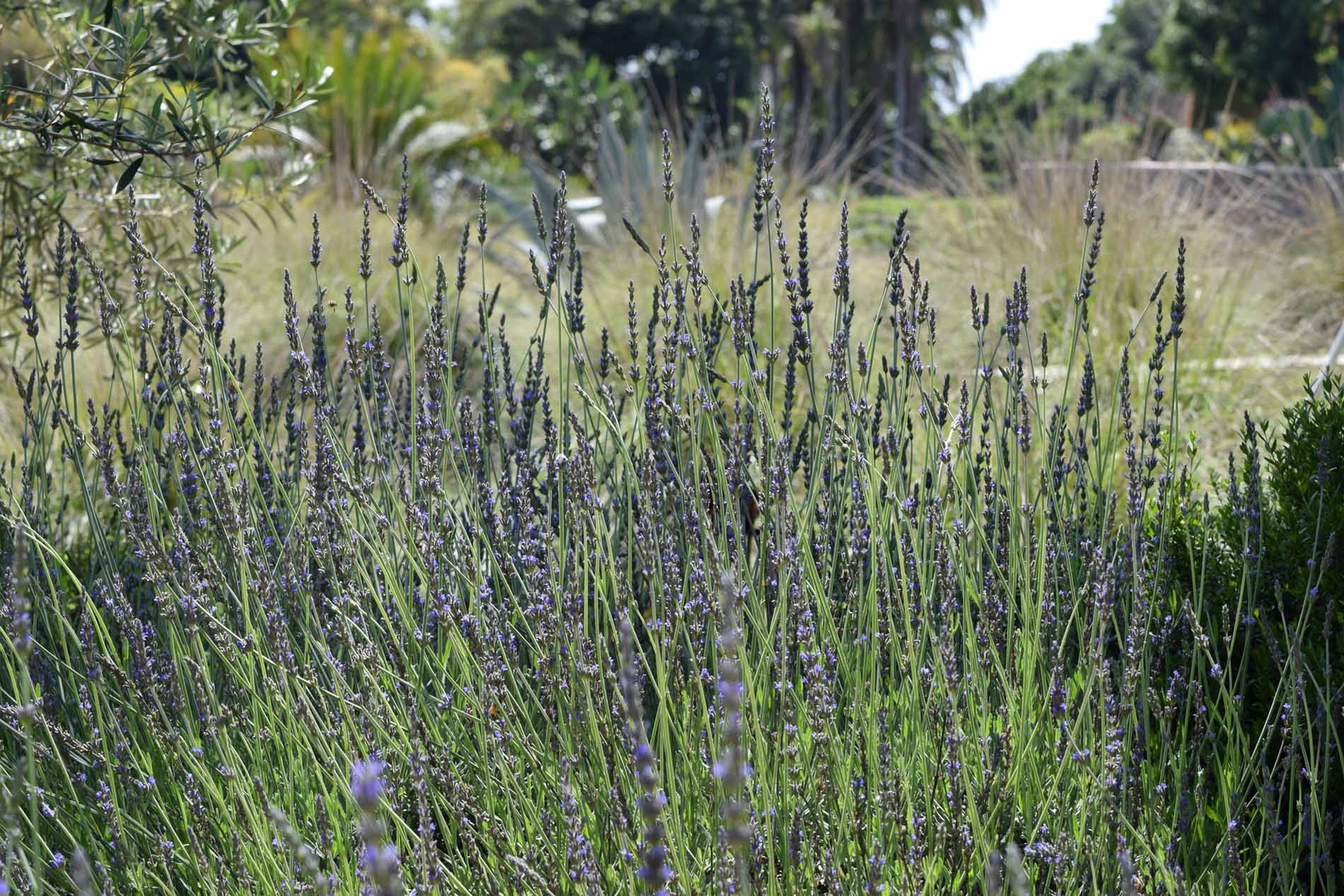
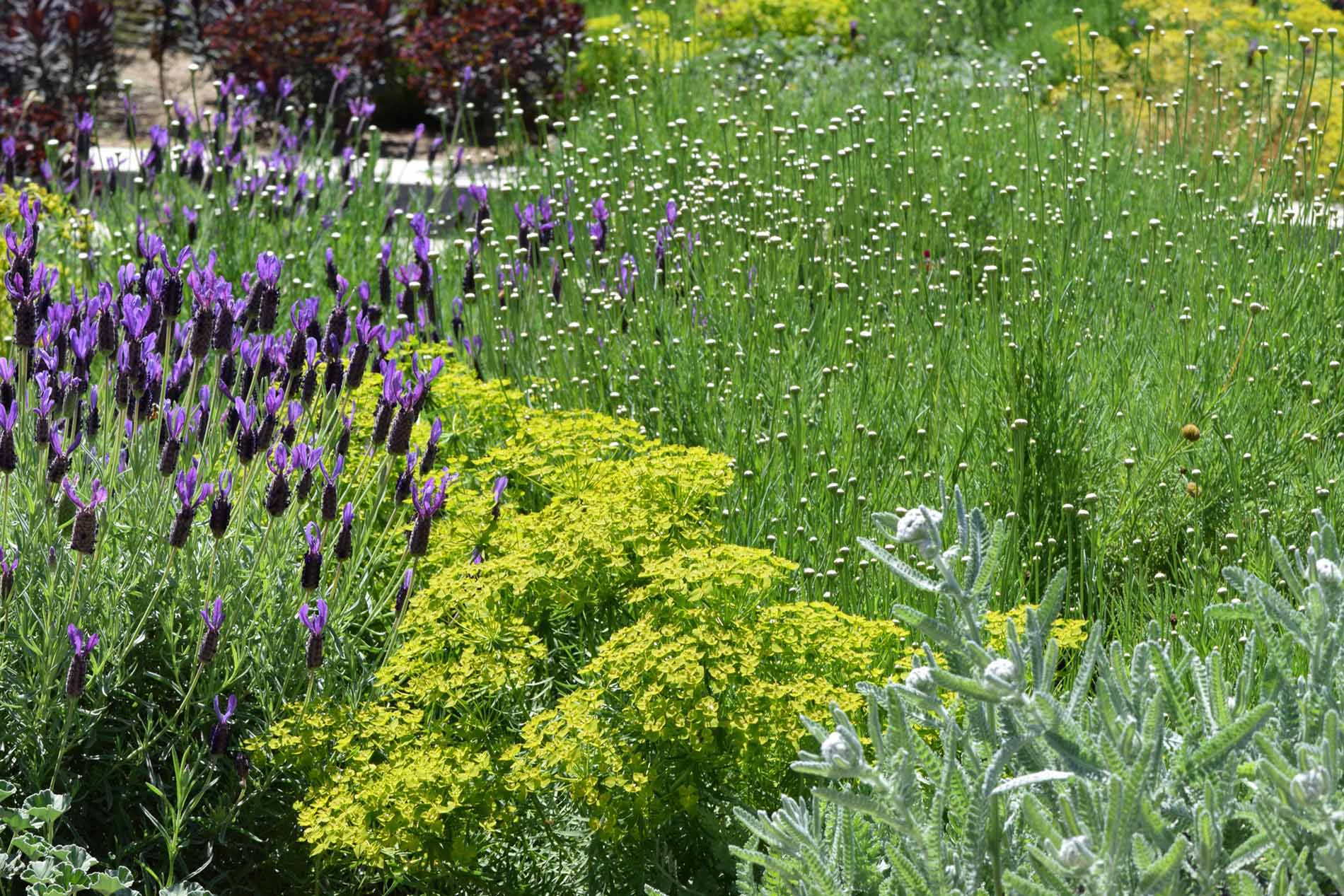
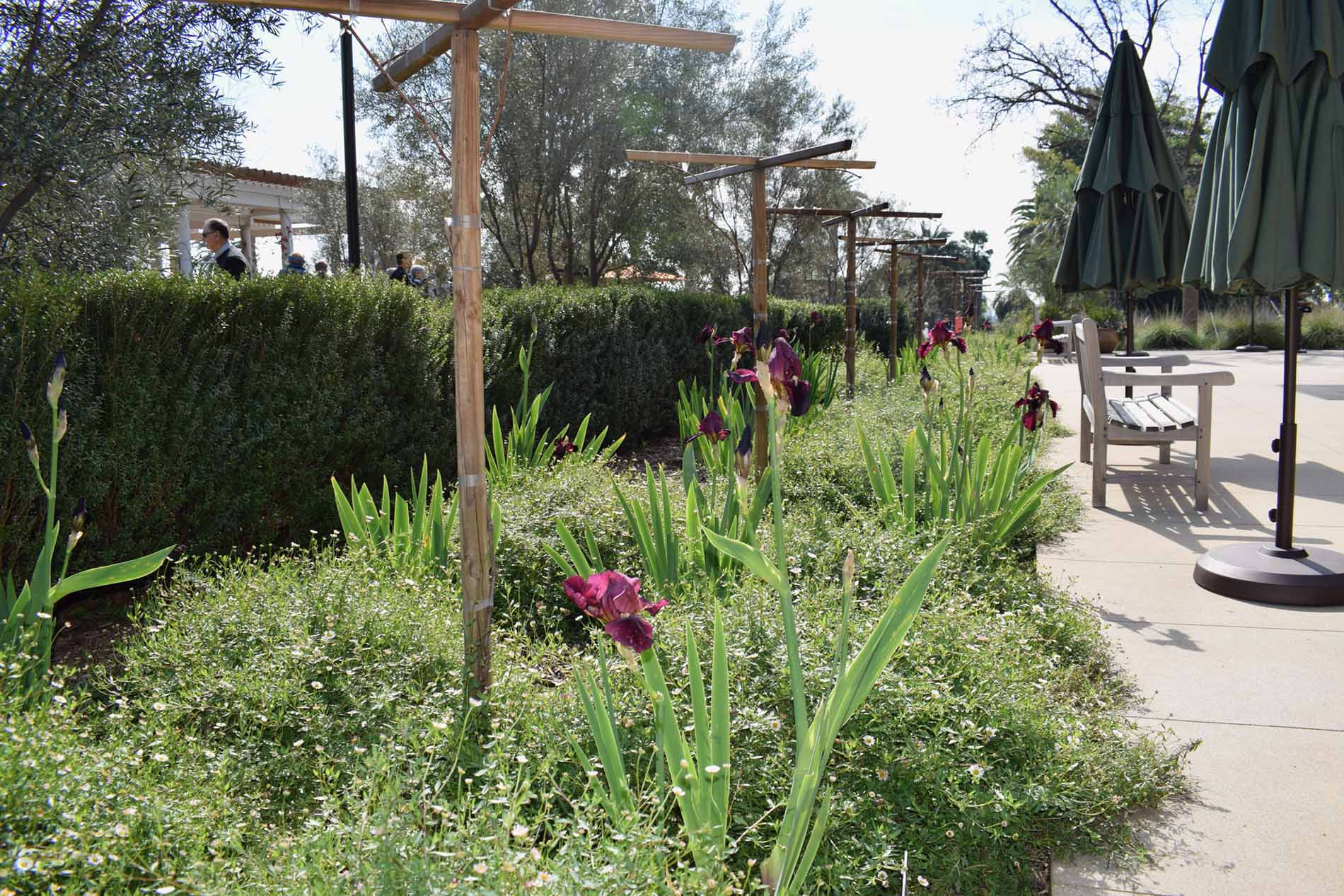
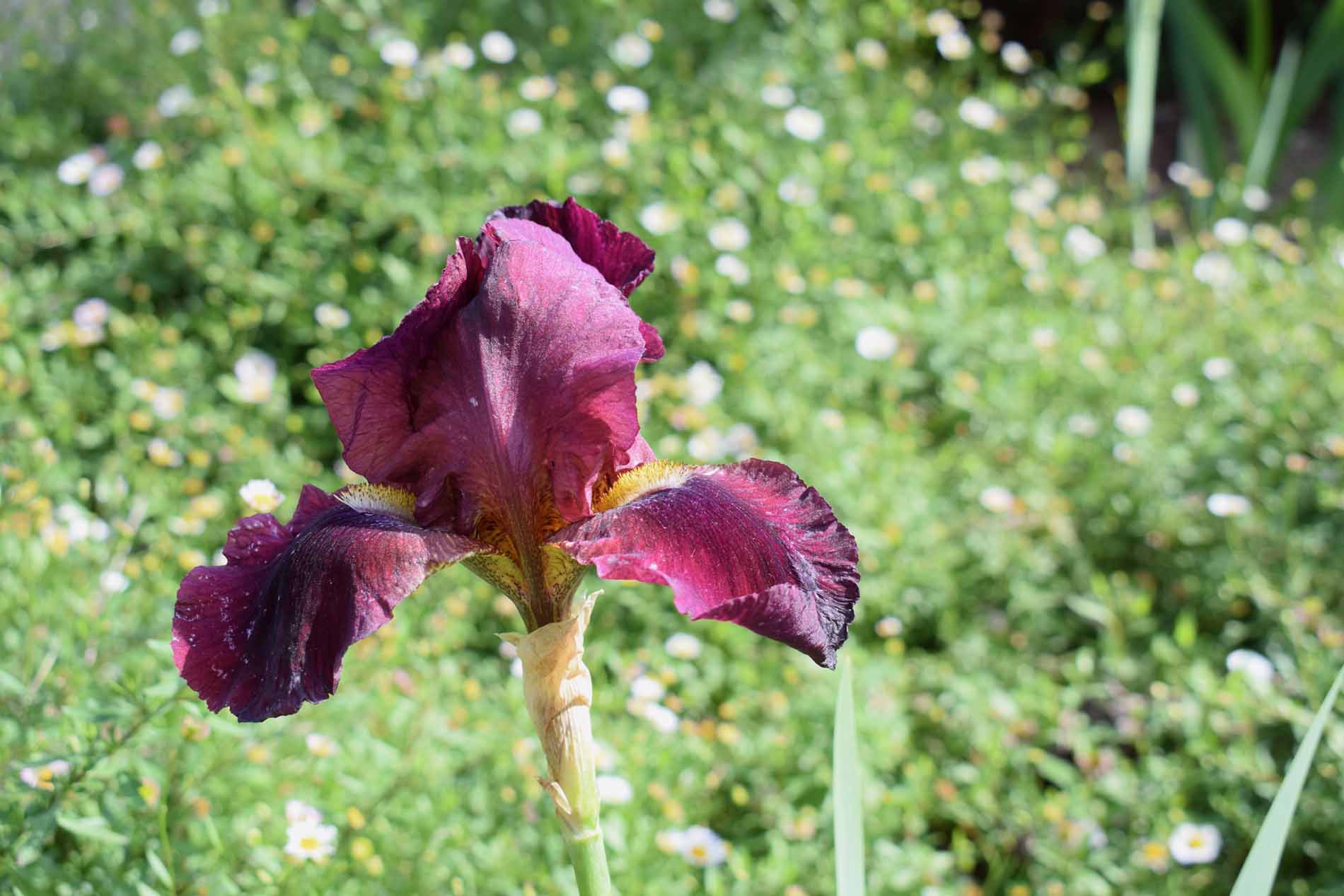
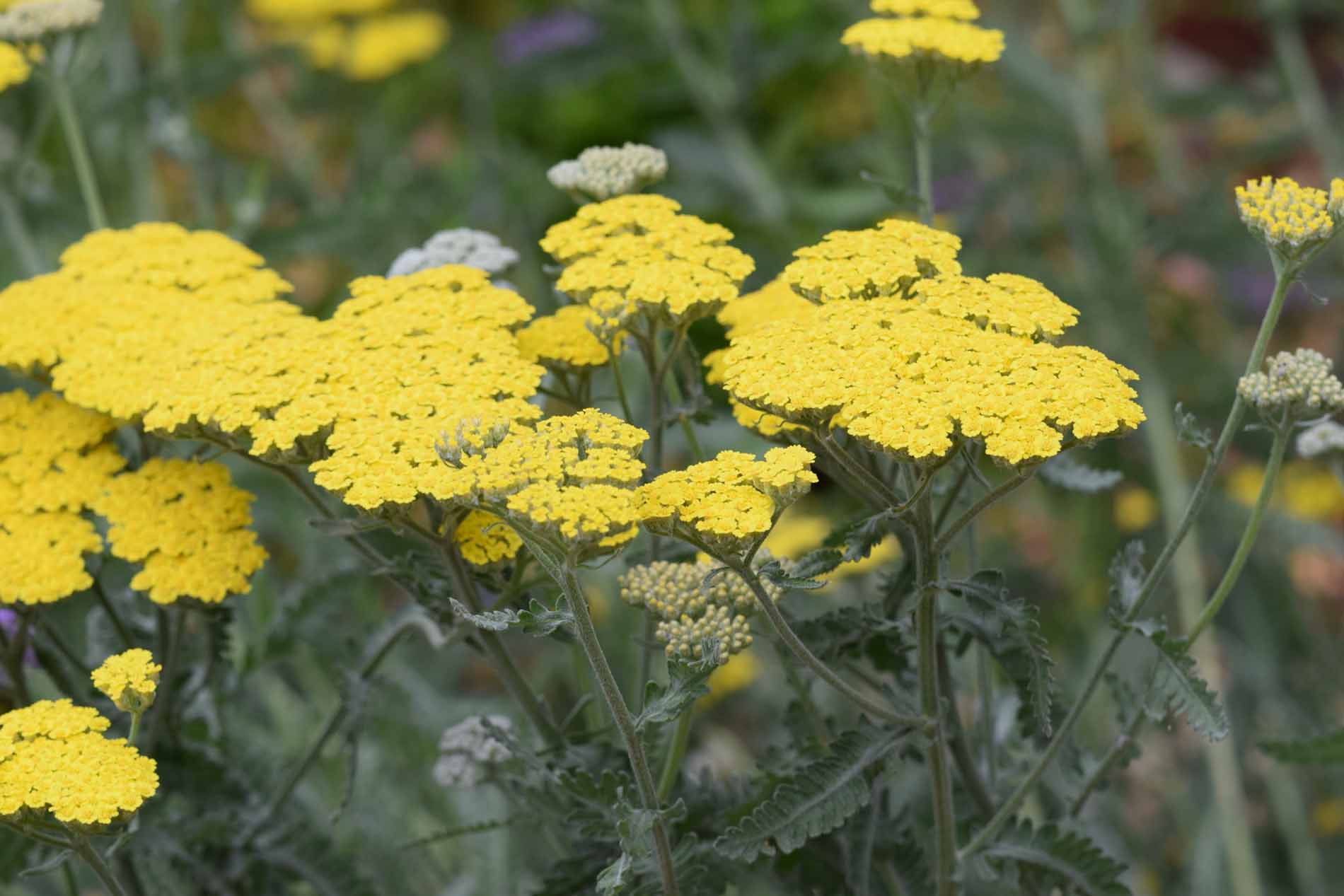
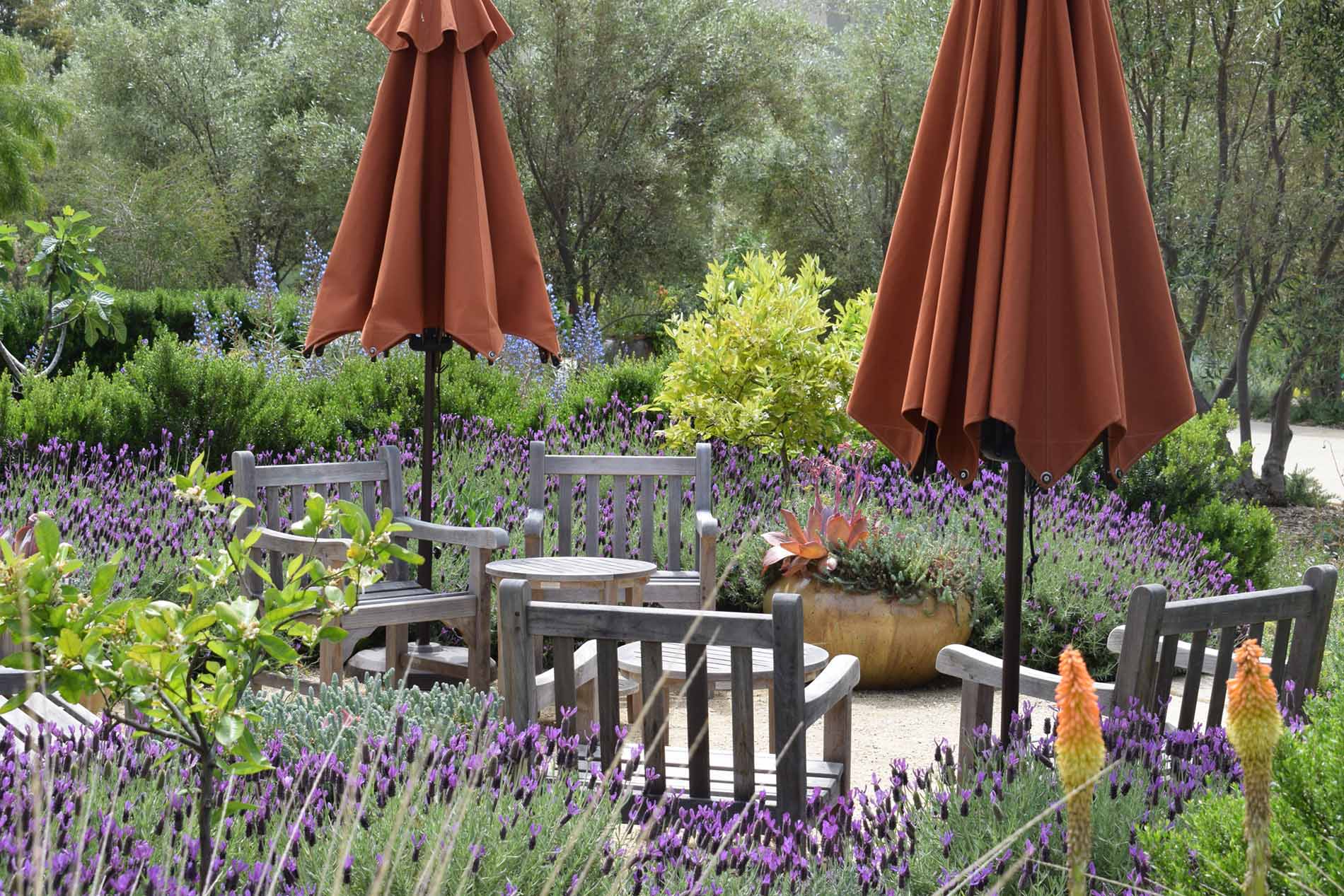

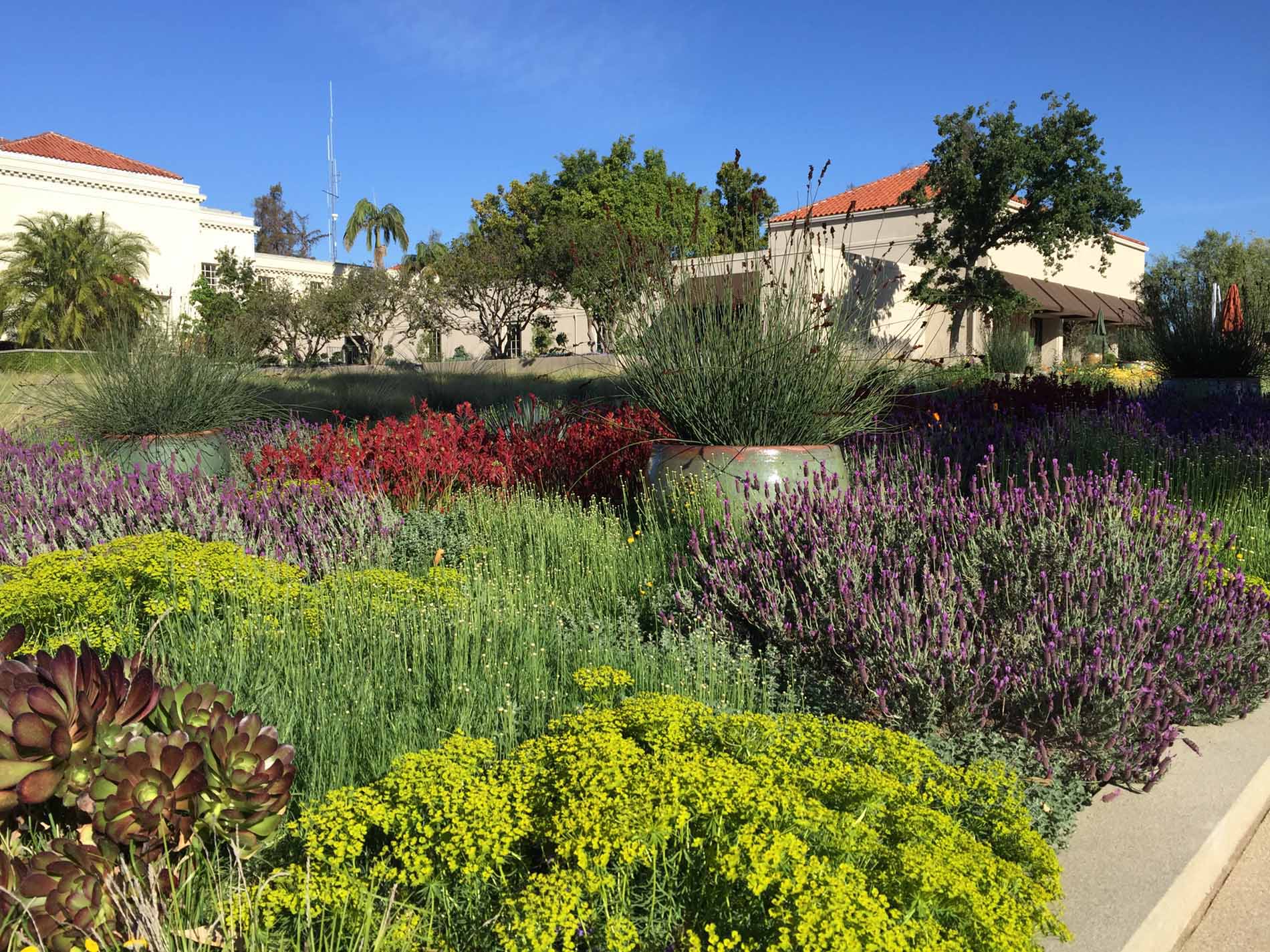
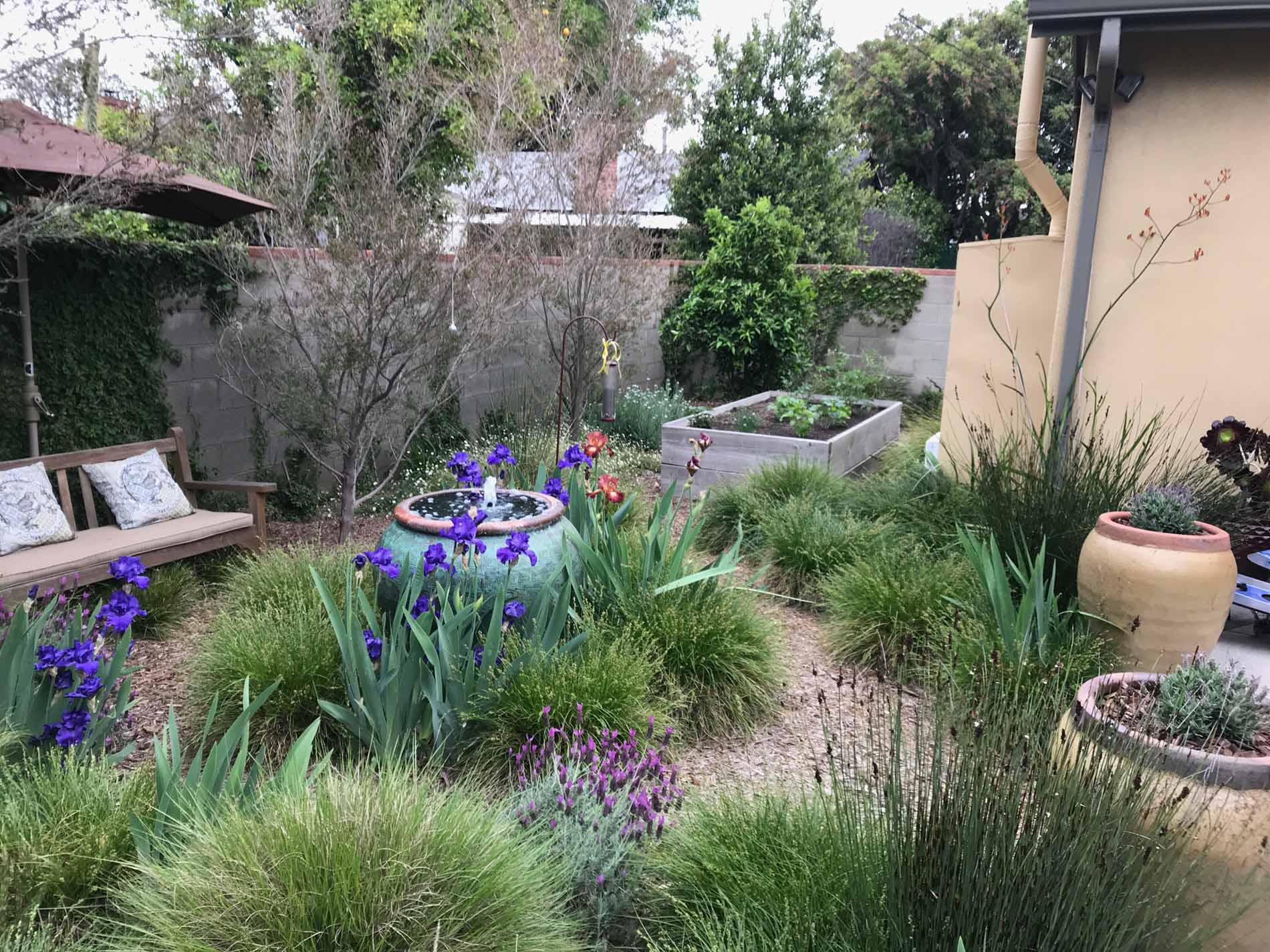
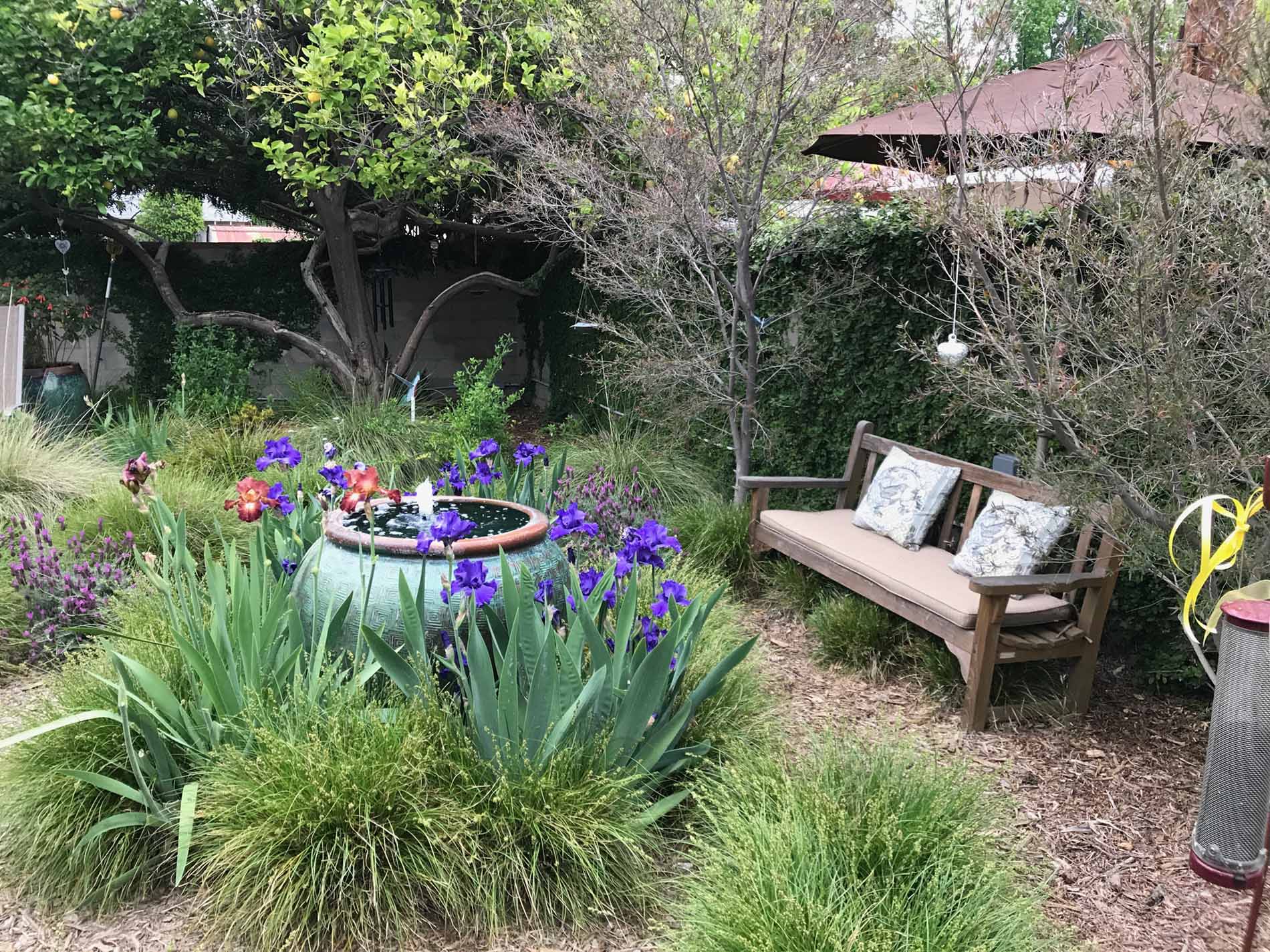
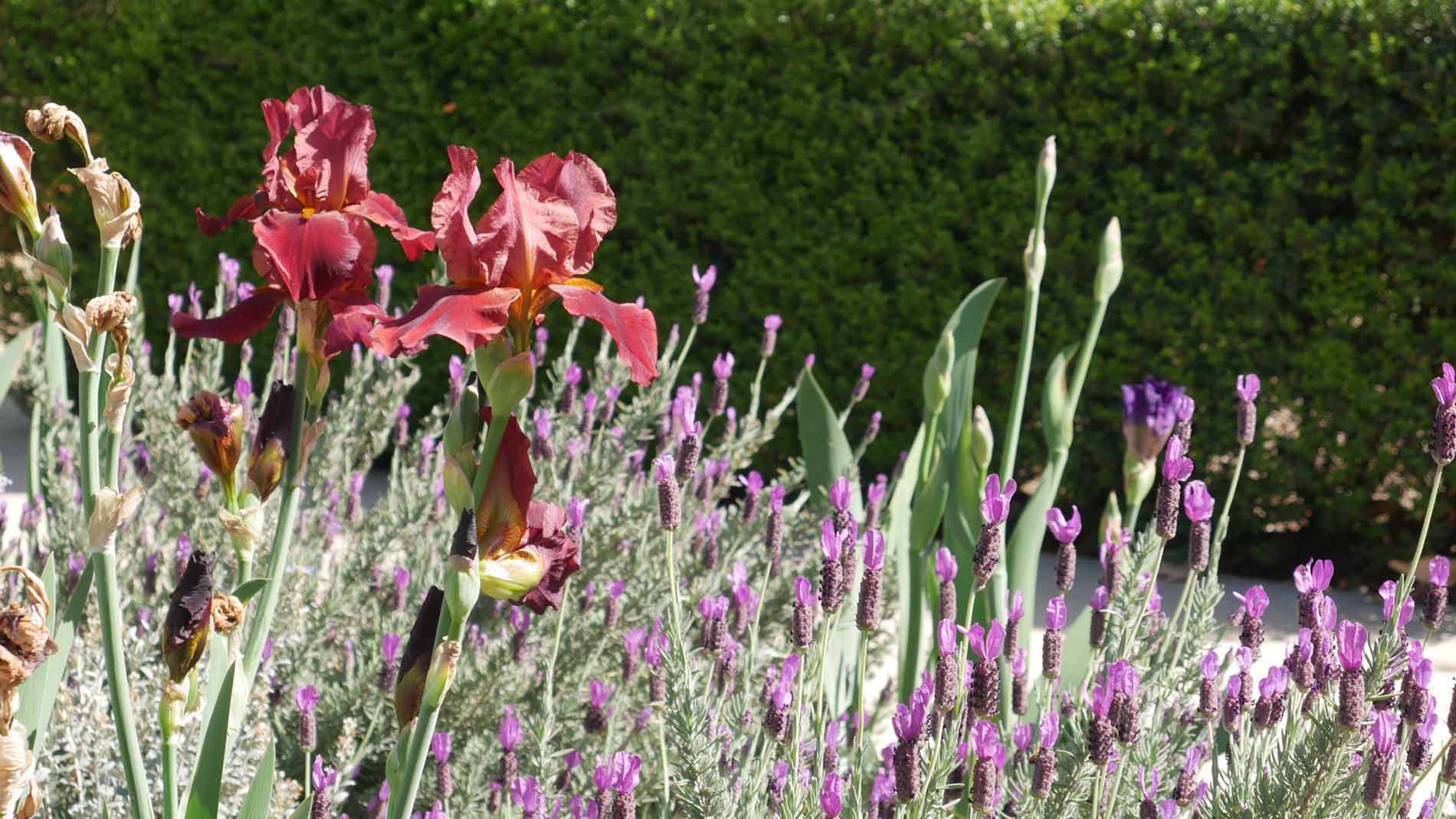
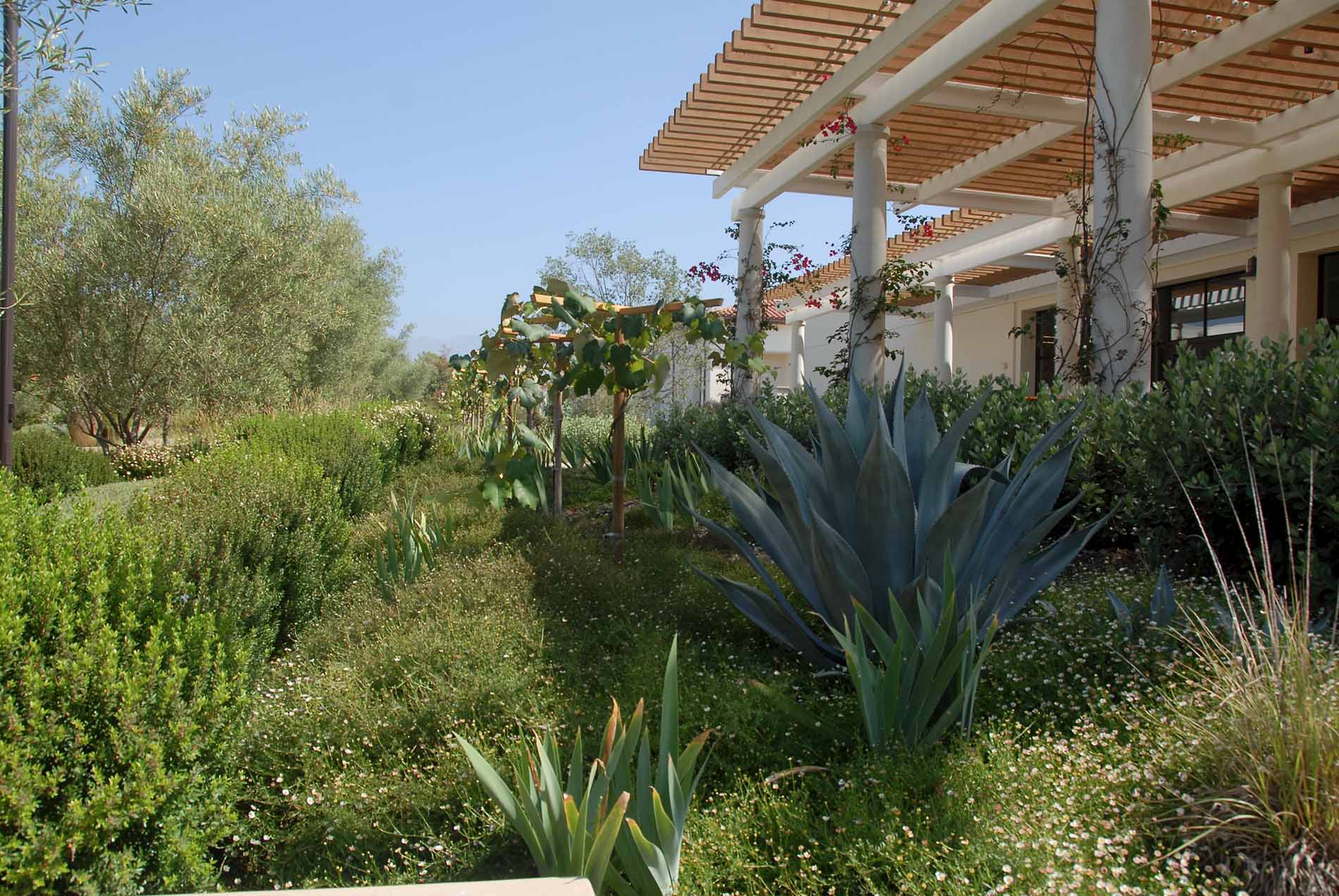
Mediterranean Garden characteristics
Its an easy-to-combine palette of a tree, shrubs, perennials, and grasses, that provides a wide range of colors and the wonderful smells of lavender, rosemary, and catmint. If you are looking for a classic European cottage garden, while keeping things low water, or want to incorporate low hedges and formal elements with pops of looser color, the Simple Mediterranean Garden is a choice to consider.
This plant palette is available as an option for the Waterwise Community Center’s Landscape Design Assistance Program. Visit cbwcd.org/design for more details.
Horticultural preferences
The plants in the Simple Mediterranean Garden palette are easy to grow, but mostly prefer well-drained sandy or loamy soils. This is a palette for full-sun gardens (at least six hours of sunlight per day, some morning or afternoon shade from buildings or trees next to the planting is generally okay). A few of the plants in the palette are adapted to clay soils, if they are not overwatered. If you have clay soil and want to use this palette, look up each plant and select those that are adapted to clay soil. In those conditions, if you want to grow lavender, an iconic Mediterranean plant, you may have more luck planting it in pots filled with cactus mix soil, to ensure good drainage.
The plants in this palette are easy to care for and generally do not require any pruning more than once or twice per year, but it is important to do that at the right time of year for each plant. Refer to the “maintenance” entry for each individual plant.
All of these plants prefer sandy or rocky soils with good drainage. This also makes them well suited for raised planters and on banks and slopes. Some of these plants can tolerate heavy or clay soils as long as they are not overwatered (and in clay soils prefer to be planted a bit high so that water will never pool at the base of the plants). If you have clay soil, check the information in each individual plant profile to see if they are adapted to clay soils.
Aesthetic character
The look and smells of the Mediterranean. A riot of color in the spring. The grey leaves of lavender and Moonshine yarrow contrasted with the dark greens of rosemary and other shrubs. You can use these plants completely informally or create hedges or rows of rosemary, dwarf myrtle, and / or lavender and use the perennials and grasses as a looser fill within the definition of the shrubs.
Moisture needs
Classic Mediterranean Garden plantings will perform best if treated as the “wetter” end of a low water use planting. This is still low water use, and it requires far less water than a lawn. In most cases, for established plantings, this will be a twice-per-month deep irrigation in the hot and dry months. So, these planting will be low water, but not as low water as California native or desert plantings.
In most situations, recently installed plantings in their first year will want a deep watering of approximately one inch per week during dry weather, until they begin to become established, usually approximately one year after planting. Then, begin to increase the time between watering events, keeping an eye on how the plants are doing, until you reach your “established” irrigation schedule.
The chart shown below provides a baseline guide to the monthly irrigation schedule and volume of supplemental water needed to maintain healthy growth. Several winter months noted by an asterisk (*) indicate when rains can provide sufficient moisture and irrigation is not needed. It is important to note that these plants can successfully grow within a range of supplemental moisture each month; the actual irrigation schedule should be adjusted to reflect specific soil, slope and exposure conditions to achieve best plant performance.
Low water Use Plants – Irrigation Schedule 2
| Jan* | Feb* | Mar* | Apr | May | Jun | Jul | Aug | Sep | Oct | Nov* | Dec* | |
|---|---|---|---|---|---|---|---|---|---|---|---|---|
| Runs per Month | 0x to 2x | 0x to 2x | 0x to 2x | 1x to 2x | 1x to 2x | 1x to 2x | 1x to 2x | 1x to 2x | 1x to 2x | 1x to 2x | 0x to 2x | 0x to 2x |
| Inches per Run | 1″ | 1″ | 1″ | 1″ | 1″ | 1″ | 1″ | 1″ | 1″ | 1″ | 1″ | 1″ |
| Inches per Month | 0″ to 2″ | 0″ to 2″ | 0″ to 2″ | 1″ to 2″ | 1″ to 2″ | 1″ to 2″ | 1″ to 2″ | 1″ to 2″ | 1″ to 2″ | 1″ to 2″ | 0″ to 2″ | 0″ to 2″ |
Range of supplemental summer water: 7″-14″ Range of supplemental winter water: 0″-10″
0″-2″ | 0″-2″ | 0″-2″ | 1″-2″ | 1″-2″ | 1″-2″ | 1″-2″ | 1″-2″ | 1″-2″ | 1″-2″ | 0″-2″ | 0″-2″ | |
| Jan* | Feb* | Mar* | Apr | May | Jun | Jul | Aug | Sep | Oct | Nov* | Dec* |
For more information on how to use this Irrigation Schedule and Graph, follow this link.
For information how to calculate your irrigation system’s schedule and precipitation rate, please follow this link.
